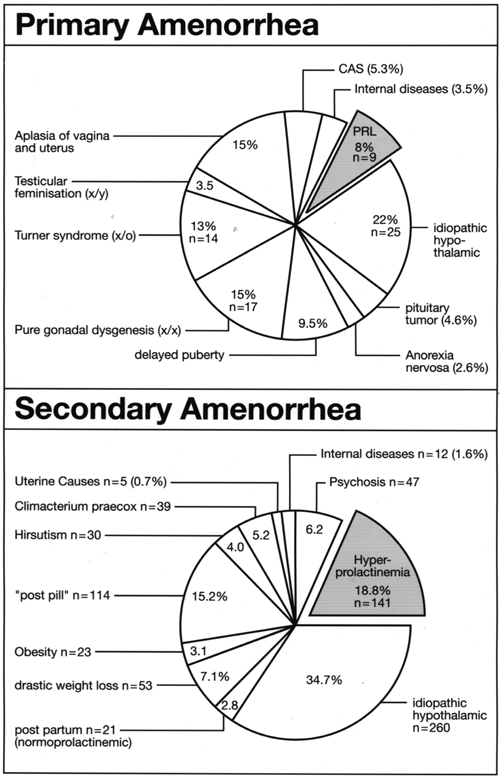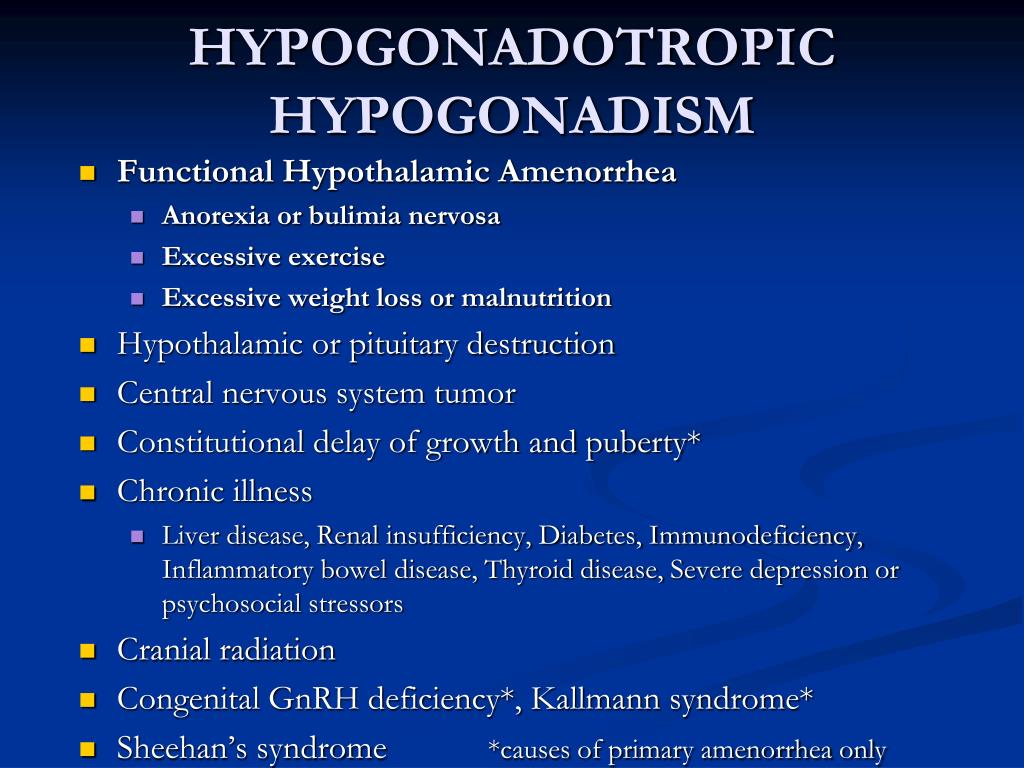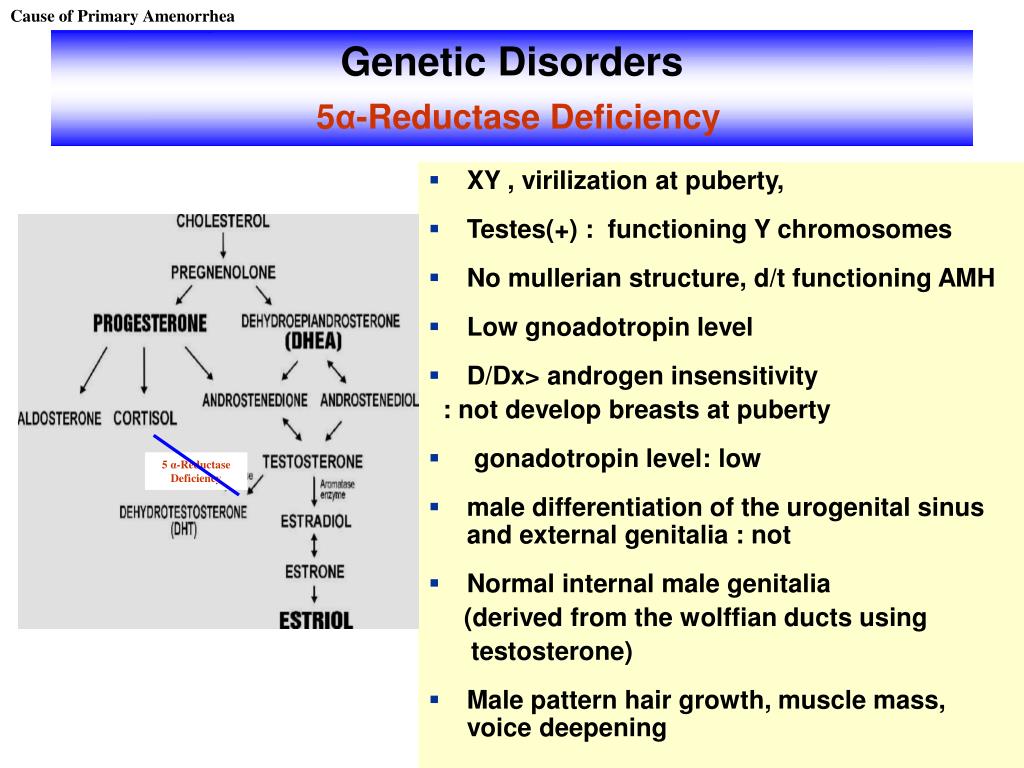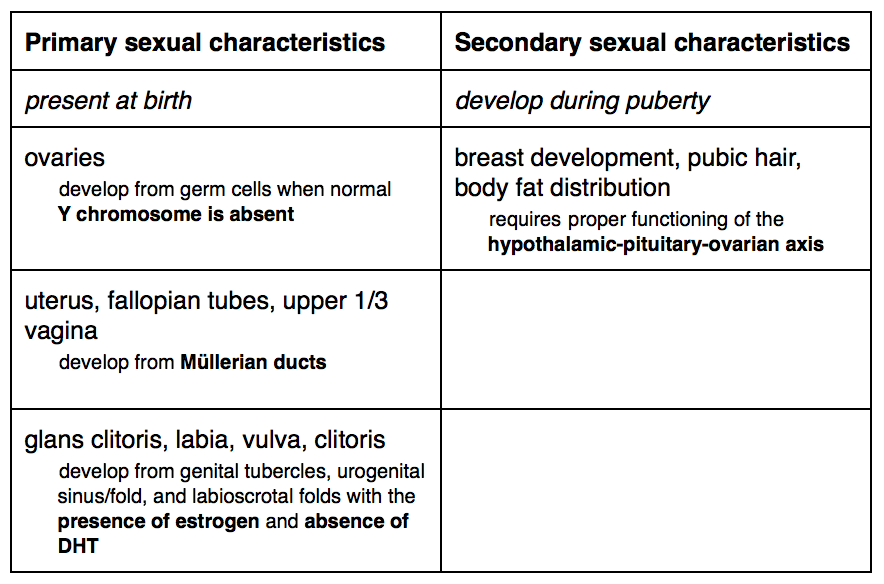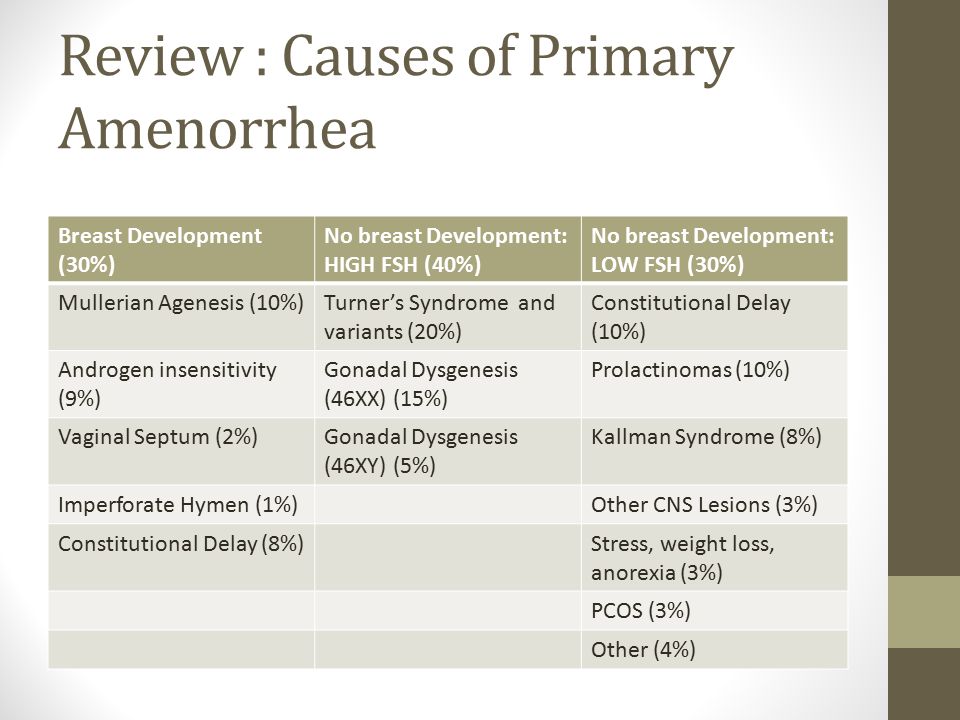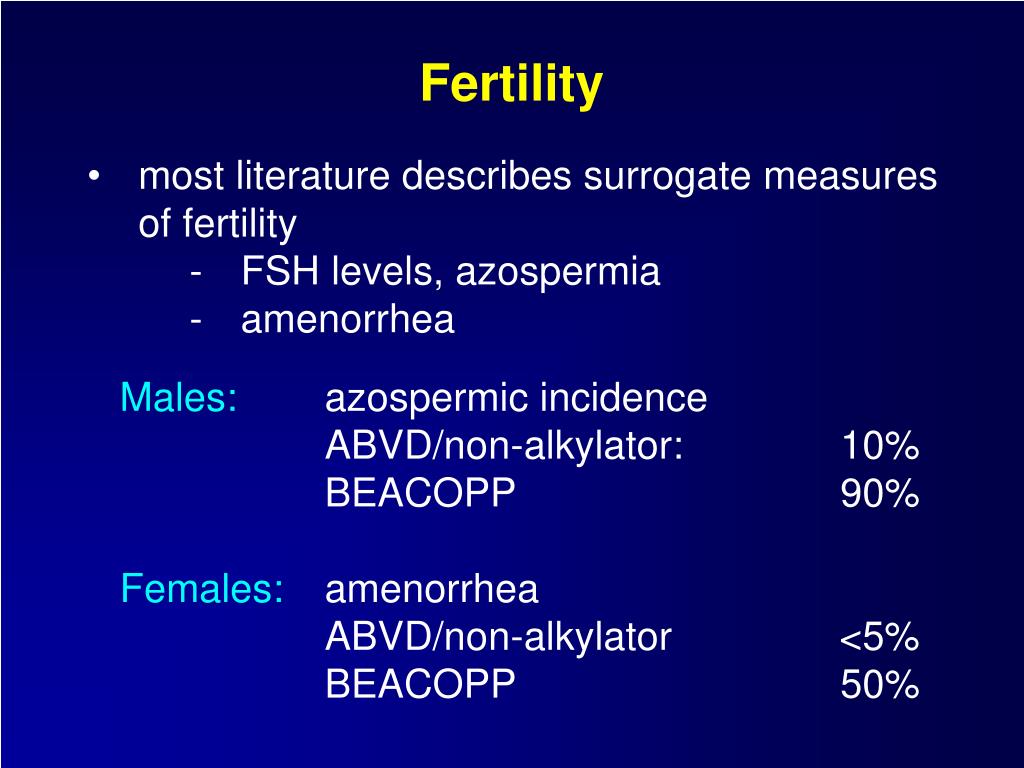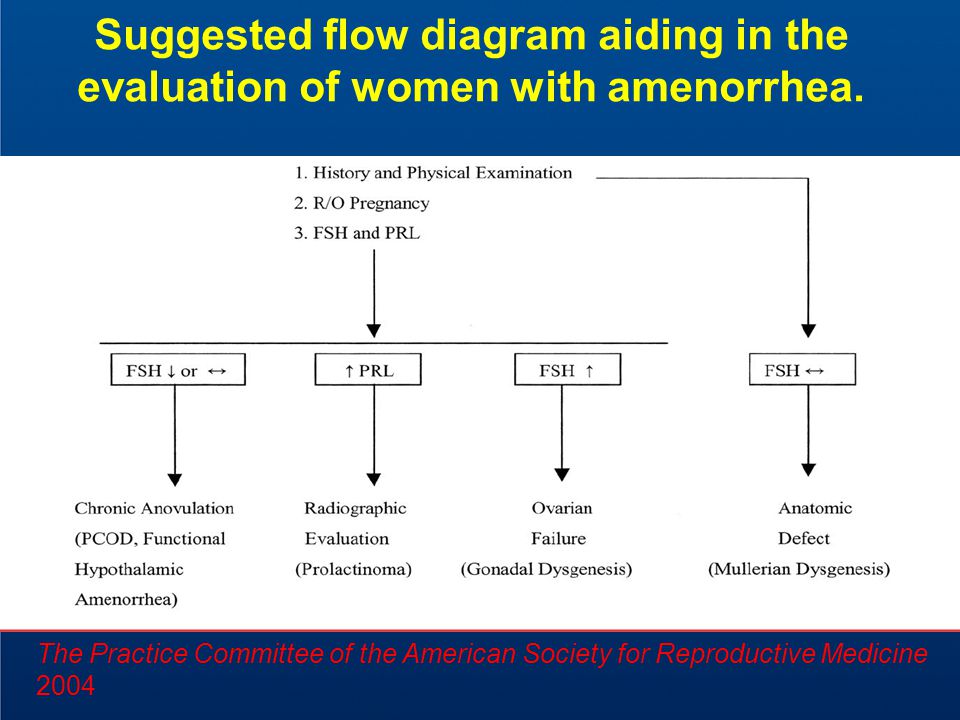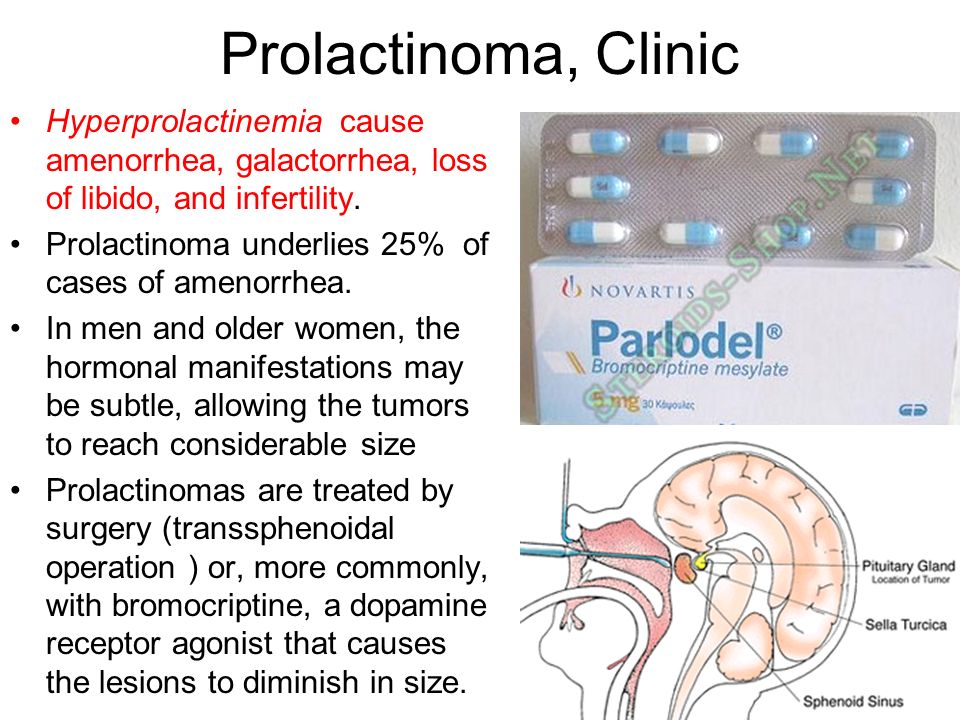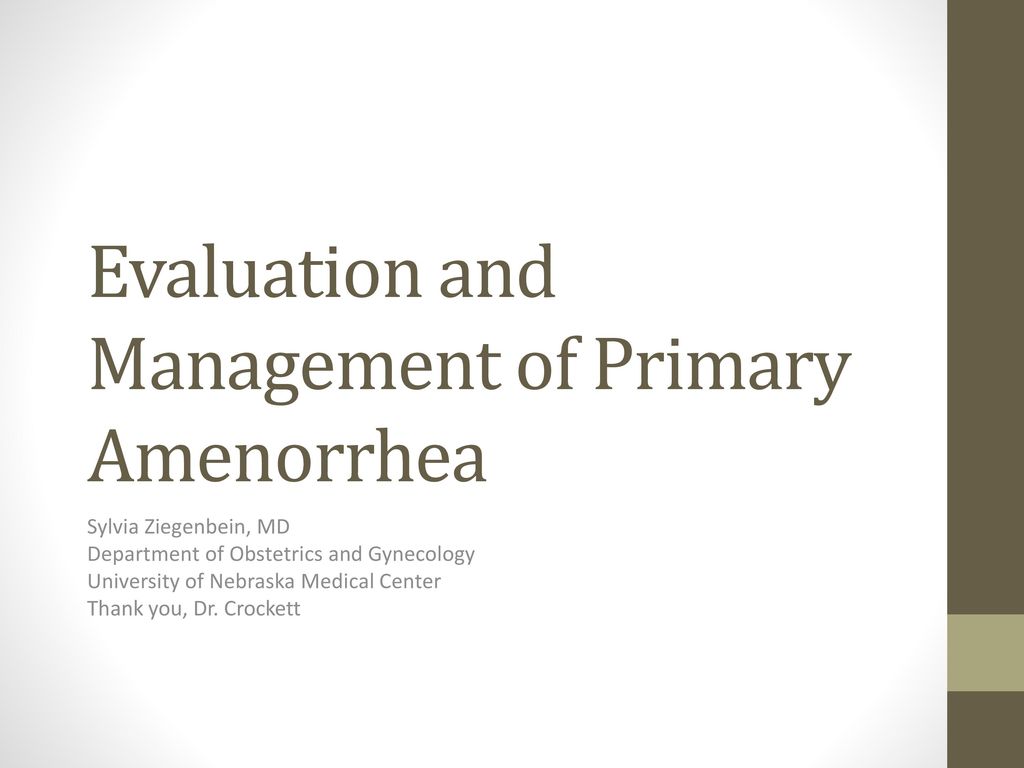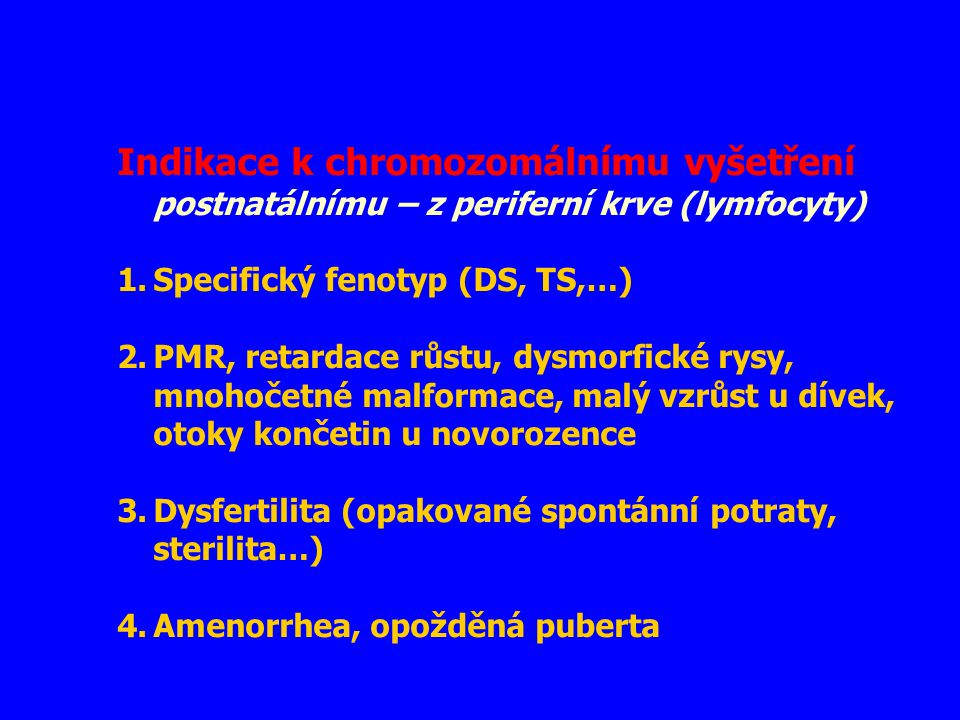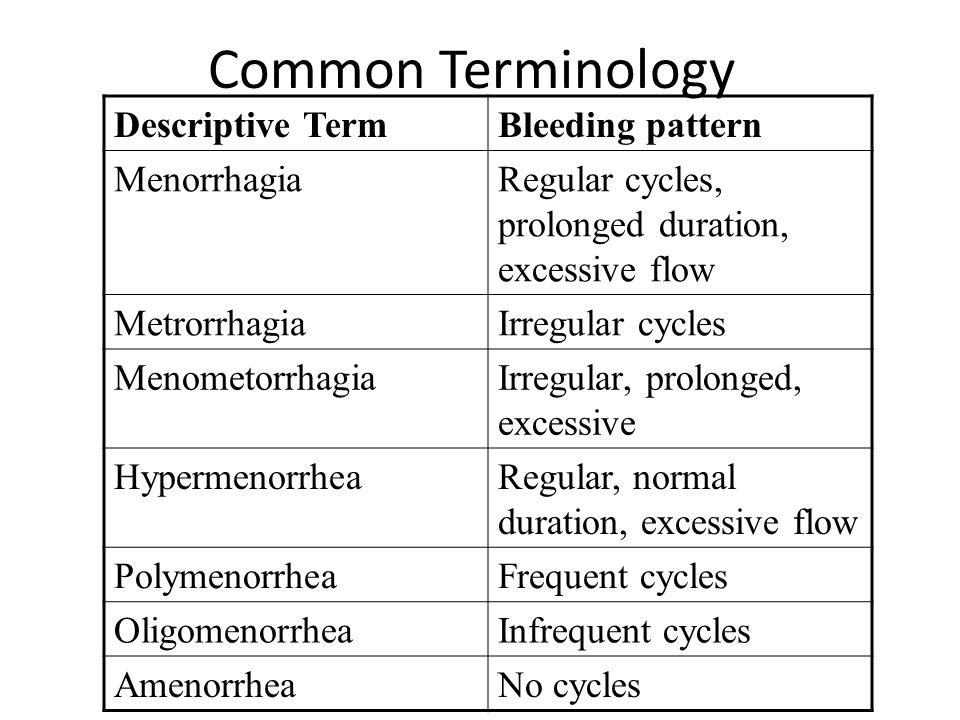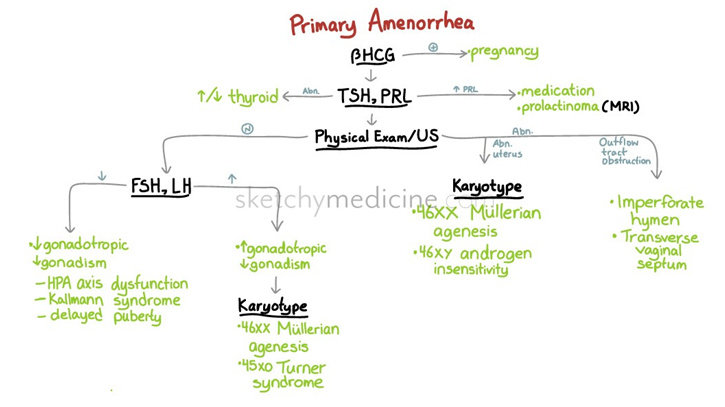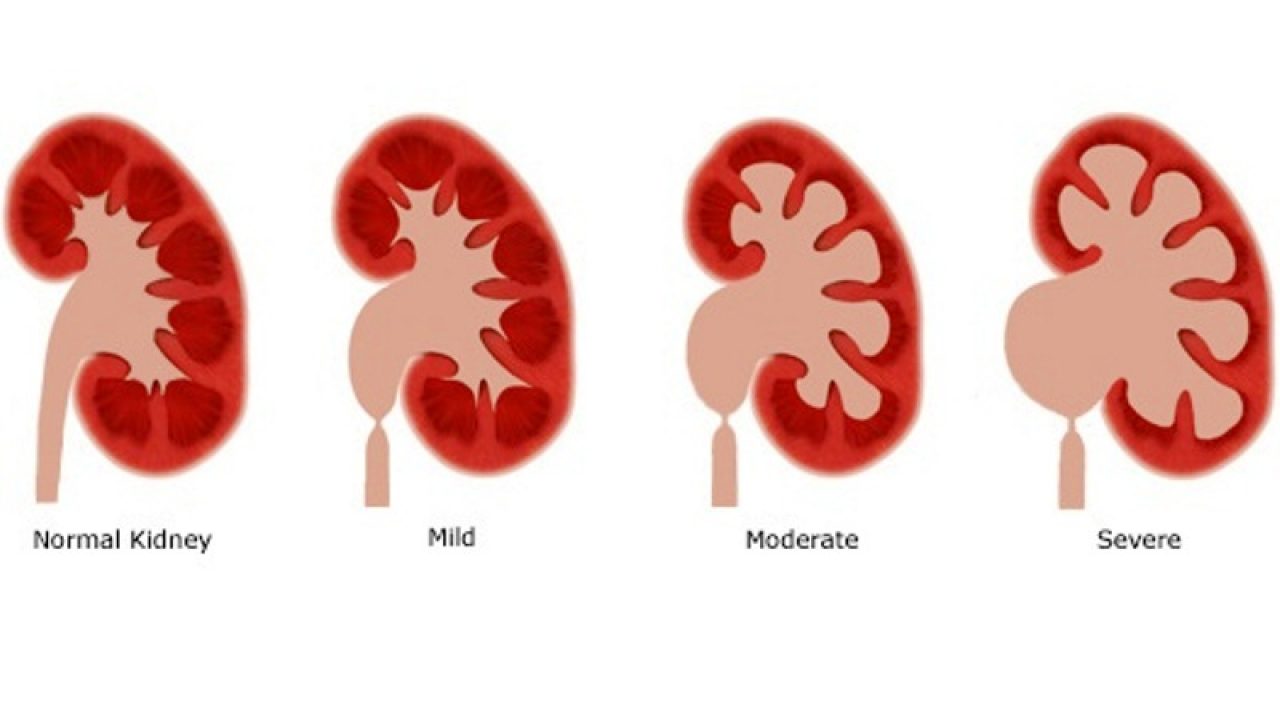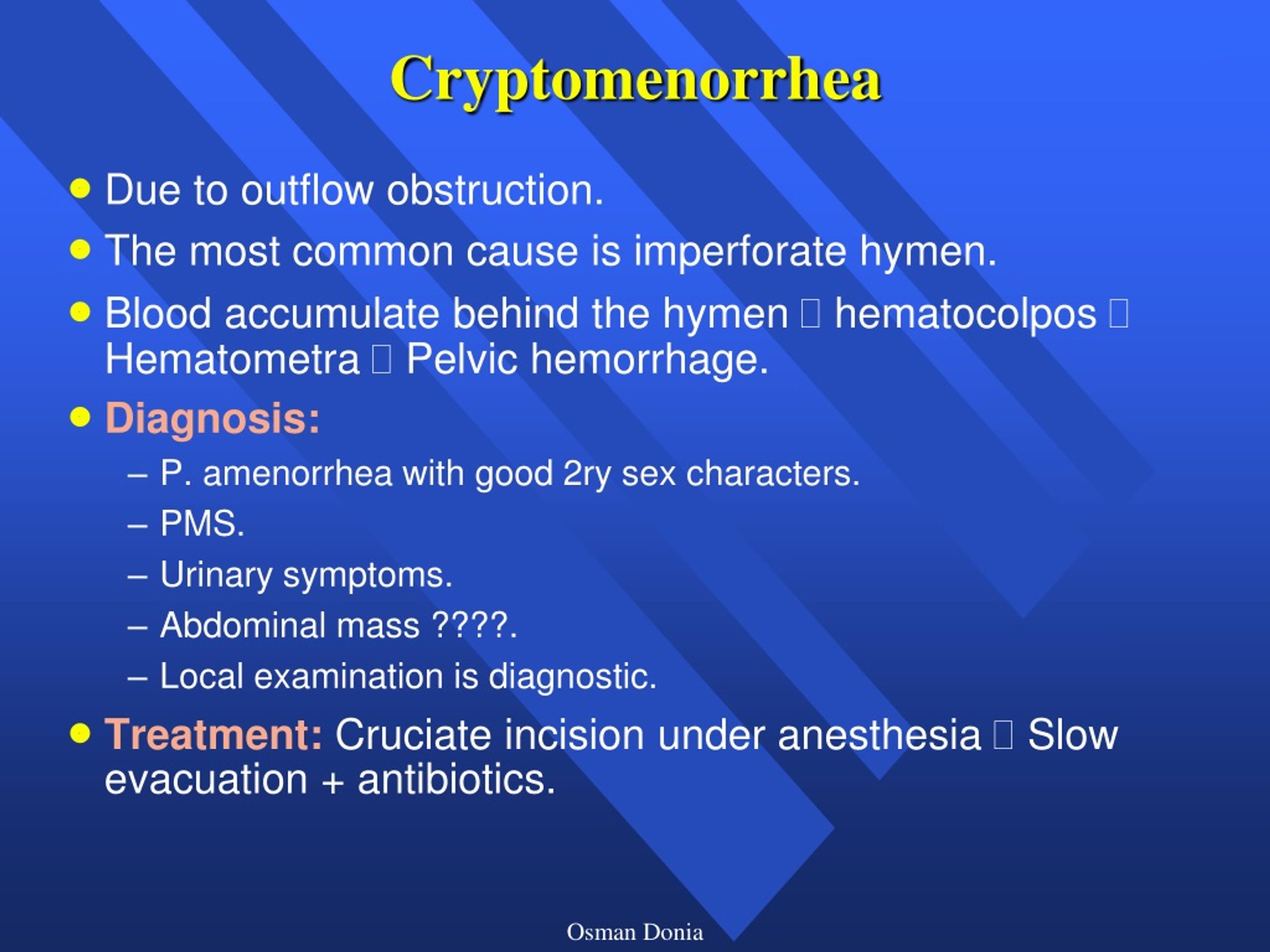What is secondary amenorrhea. Exploring Secondary Amenorrhea: Causes, Diagnosis, and Comprehensive Insights
What is secondary amenorrhea. Learn about the causes, symptoms, diagnosis, and treatment options for secondary amenorrhea. Gain a thorough understanding of this reproductive health condition.
Understanding Secondary Amenorrhea
Amenorrhea, the absence of menstrual periods, can be classified into two main categories: primary and secondary. Primary amenorrhea refers to the lack of a first period by the age of 15 or within five years of the initial signs of puberty. On the other hand, secondary amenorrhea occurs when a person who has been experiencing regular menstrual cycles suddenly stops getting their period for at least three consecutive months, or when they stop having periods for six months if their cycles were previously irregular.
Causes of Secondary Amenorrhea
There are several potential causes of secondary amenorrhea, including:
- Stress: Significant mental or physical stress can disrupt the delicate hormonal balance that regulates the menstrual cycle, leading to secondary amenorrhea.
- Poor Nutrition: Inadequate nutrient intake, whether due to an eating disorder or other dietary factors, can interfere with the body’s ability to maintain regular menstrual cycles.
- Weight Changes: Both extreme weight loss and obesity can contribute to the development of secondary amenorrhea.
- Excessive Exercise: Engaging in high levels of physical activity, especially when combined with low caloric intake, can disrupt the menstrual cycle and lead to secondary amenorrhea.
- Chronic Illness: Certain medical conditions, such as thyroid disorders, polycystic ovary syndrome (PCOS), and pituitary gland issues, can cause secondary amenorrhea.
- Pregnancy: Pregnancy is a common cause of secondary amenorrhea, as the body’s hormonal changes during pregnancy prevent normal menstrual cycles.
- Medications: Some medications, such as hormonal contraceptives, certain antidepressants, and chemotherapy drugs, can also lead to secondary amenorrhea.
Symptoms of Secondary Amenorrhea
The primary symptom of secondary amenorrhea is the absence of menstrual periods for at least three consecutive months, or the cessation of periods for six months if they were previously irregular. Additionally, individuals with secondary amenorrhea may experience:

- Headaches
- Mood changes
- Breast changes
- Acne
Diagnosing Secondary Amenorrhea
If you have missed your period for three or more months, it’s important to consult with a healthcare provider. They will begin the diagnostic process by taking a thorough medical history and performing a physical exam, including a pelvic examination. To confirm the diagnosis and identify the underlying cause, your provider may order the following tests:
- Pregnancy test
- Blood tests to assess hormone levels, including thyroid and adrenal function
- Genetic testing, if primary ovarian insufficiency is suspected
- Imaging tests, such as an MRI, to check for issues with the pituitary gland or hypothalamus
Treating Secondary Amenorrhea
The treatment for secondary amenorrhea will depend on the underlying cause. Some common treatment approaches include:
- Lifestyle Modifications: If stress, poor nutrition, or excessive exercise are contributing factors, making changes to address these issues may help restore regular menstrual cycles.
- Medication: In cases where hormonal imbalances or medical conditions are the root cause, medications such as hormonal contraceptives or medications to address the underlying condition may be prescribed.
- Fertility Treatments: For individuals who are trying to become pregnant, fertility treatments such as ovulation induction or in vitro fertilization may be recommended.
- Surgical Interventions: In rare cases, surgical treatment may be necessary to address structural issues within the reproductive system.
Preventing Secondary Amenorrhea
While some causes of secondary amenorrhea are beyond an individual’s control, there are steps you can take to reduce your risk:

- Maintain a healthy, balanced diet and weight
- Engage in regular, moderate exercise
- Manage stress through relaxation techniques, counseling, or other methods
- Seek prompt medical attention if you miss a period or experience any concerning menstrual changes
Conclusion
Secondary amenorrhea is a complex condition with a variety of potential causes. By understanding the symptoms, underlying factors, and available treatment options, individuals can take proactive steps to address this reproductive health issue and maintain regular menstrual cycles. If you are experiencing prolonged absence of your period, it is crucial to consult with a healthcare provider to determine the root cause and develop a personalized treatment plan.
Amenorrhea & Secondary Amenorrhea: Causes, Diagnosis & Treatment
Overview
What is amenorrhea?
Amenorrhea is when you don’t get your monthly period. It can be temporary or permanent. Amenorrhea can result from a change in function or a problem with some part of the female reproductive system.
There are times when you’re not supposed to get your period, such as before puberty, during pregnancy and after menopause. If amenorrhea lasts for more than three months, it should be investigated.
How does the menstrual cycle work?
A complex system of hormones controls the menstrual cycle. Every month, hormones prepare the body for pregnancy. Ovulation then occurs. If there is no pregnancy, the cycle ends with the uterus shedding its lining. That shedding is the menstrual period.
The hormones responsible for this cycle originate in different parts of the body. A dysfunction in any of these parts can prevent a person from getting a period:
- Hypothalamus, which controls the pituitary gland.

- Pituitary gland, called “the master gland,” which produces the hormones that instruct the ovaries to ovulate.
- Ovaries, which produce the egg for ovulation and the hormones estrogen and progesterone.
- Uterus, which responds to the hormones and prepares the lining. This lining sheds as the menstrual period if there’s no pregnancy.
What are the types of amenorrhea?
There are two classifications of amenorrhea:
- Primary amenorrhea is when you haven’t gotten a first period by age 15 or within five years of the first signs of puberty. It can happen due to changes in organs, glands and hormones related to menstruation.
- Secondary amenorrhea is when you’ve been getting regular periods, but you stop getting your period for at least three months, or you stop your menses for six months when they were previously irregular. Causes can include pregnancy, stress and illness.

Who is at risk for amenorrhea?
Risk factors for amenorrhea include:
- Family history of amenorrhea or early menopause.
- Genetic or chromosomal condition that affects your menstrual cycle.
- Obesity or being underweight.
- Eating disorder.
- Over-exercising.
- Poor diet.
- Stress.
- Chronic illness.
Symptoms and Causes
What causes amenorrhea?
The different types of amenorrhea have different causes.
Common causes of primary amenorrhea include:
- Chromosomal or genetic problem with the ovaries (the female sex organs that hold the eggs).
- Hormonal issues stemming from problems with the hypothalamus or the pituitary gland.
- Structural problem with the reproductive organs, such as missing parts of the reproductive system.
Common causes of secondary amenorrhea include:
Other causes of secondary amenorrhea can include:
- Stress.

- Poor nutrition.
- Weight changes — extreme weight loss or obesity.
- Exercising associated with low weight.
- Ongoing illness or chronic illness.
You may also have conditions that can cause secondary amenorrhea:
- Primary ovarian insufficiency, when you experience menopause before age 40.
- Hypothalamus disorders, such as functional hypothalamic amenorrhea (FHA) — which is also called hypothalamic amenorrhea (HA). FHA is a condition where amenorrhea is associated with stress or weight loss, but isn’t clearly caused by an organic issue with a woman’s body.
- Pituitary disorders, such as a benign pituitary tumor or excessive production of prolactin.
- Other hormonal problems, such as polycystic ovary syndrome, adrenal disorders or hypothyroidism.
- Ovarian tumors.
- Surgery to remove uterus or ovaries.
What are the symptoms of amenorrhea?
The main symptom is the lack of periods. Other symptoms depend on the cause.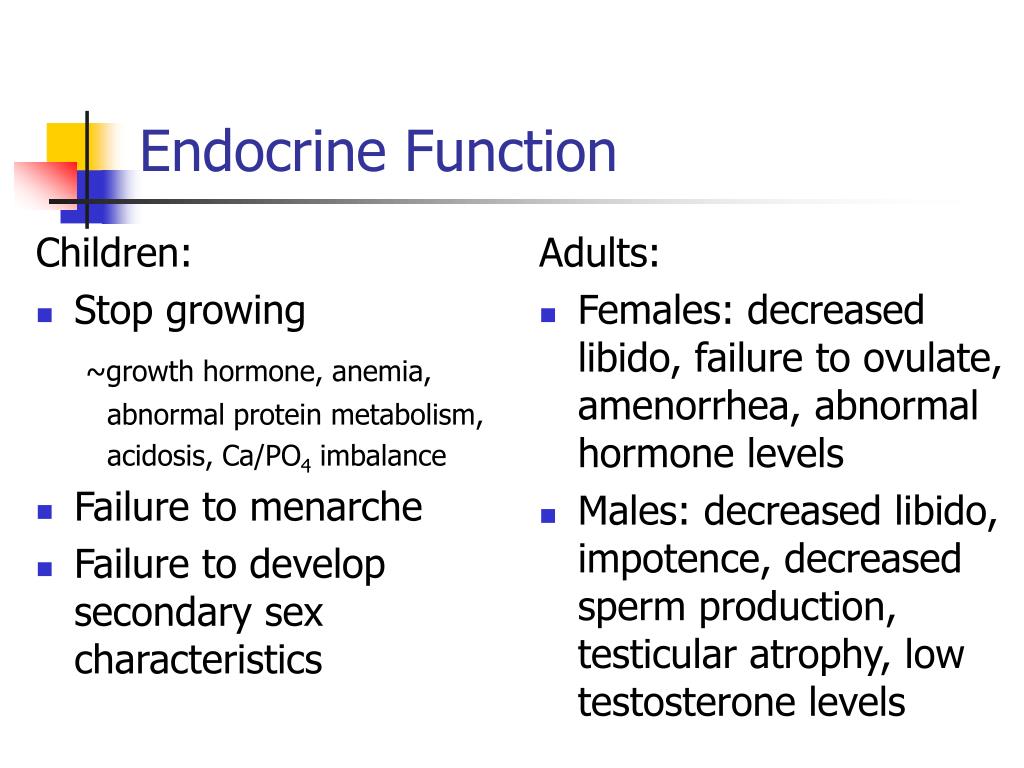 You may experience:
You may experience:
Diagnosis and Tests
How is amenorrhea diagnosed?
If you miss a period, contact your healthcare provider. Your provider will ask you about your symptoms and medical history. If amenorrhea occurred because of pregnancy, you can start prenatal care. If it’s happening because of menopause, there is help if symptoms are uncomfortable. Missed periods leading to menopause usually begin in your 40s. Your provider will perform a physical exam and a pelvic exam.
Will I need any tests to diagnose amenorrhea?
Your healthcare provider may want to do some tests, including:
- Pregnancy test.
- Blood tests to check hormone levels and detect thyroid or adrenal gland disorders.
- Genetic testing, if you have primary ovarian insufficiency and are younger than 40.
- MRI, if your provider suspects a problem with the pituitary gland or hypothalamus.
Do I need to keep track of when my periods happened?
Diagnosing amenorrhea can be challenging.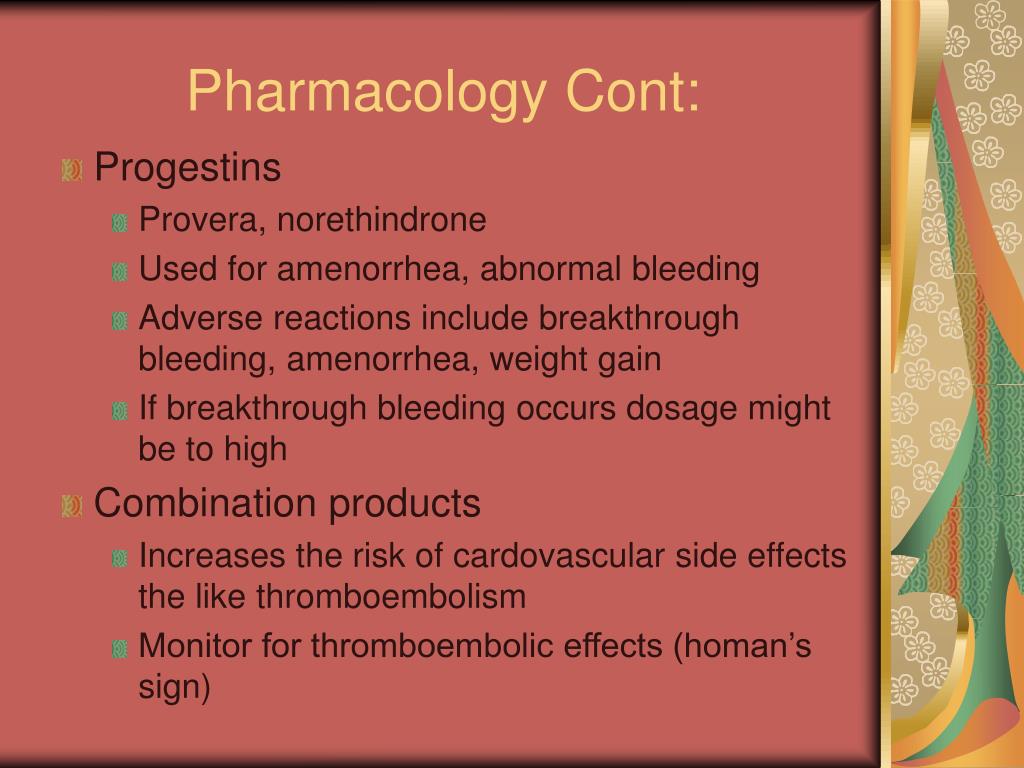 If the cause of amenorrhea isn’t obvious, such as pregnancy, your provider may ask you to keep a record of changes in your menstrual cycle. This history of your periods can help your provider figure out a diagnosis.
If the cause of amenorrhea isn’t obvious, such as pregnancy, your provider may ask you to keep a record of changes in your menstrual cycle. This history of your periods can help your provider figure out a diagnosis.
Using an app or a journal, note:
- How long your periods last.
- When you had your last period.
- Medications you are taking.
- Changes in your diet or exercise routine.
- Emotional challenges you’re having, such as stress.
Management and Treatment
How is amenorrhea treated?
If your period stopped because of menopause or pregnancy, your provider will not need to treat it. In other cases, your treatment will depend on the cause and may include:
- Losing weight through dieting and exercise (if excess weight is the cause).
- Gaining weight through an individualized diet plan (if extreme weight loss is the cause).
- Stress management techniques.
- Changing exercise levels.

- Hormonal treatment (medication), as prescribed by your healthcare provider.
- Surgery (in rare cases).
In addition, your healthcare provider may recommend some treatments to help with the side effects of amenorrhea:
Amenorrhea may be a symptom of anorexia nervosa, an eating disorder. If you or a loved one has this condition, talk to a healthcare provider immediately so you can get the right treatment.
Will I need surgery for amenorrhea?
Surgery for amenorrhea is rare. Your healthcare provider may recommend it if you have:
- Genetic or chromosomal problems.
- Pituitary tumor.
- Uterine scar tissue.
Prevention
How can I prevent amenorrhea?
Living a healthy lifestyle can help prevent some causes of secondary amenorrhea. Try to:
- Maintain a healthy weight and eat a healthy diet.
- Be aware of your menstrual cycle (so you’ll know if you miss a period).
- Get regular gynecological appointments, including having a pelvic exam and Pap test.

- Get regular and adequate sleep.
Outlook / Prognosis
Will my period return?
Typically, your period will return once you treat the underlying cause. However, it may take time to become regular again.
In some cases, you may have a health problem that means you’ll never have a period. If that is the case, your provider can talk to you about fertility options if you wish to have a baby.
Are there complications of amenorrhea?
Amenorrhea is not life-threatening. However, some causes may lead to increased risks over the long term, so amenorrhea should always be evaluated. Researchers have found a greater risk of hip and wrist fractures in people with amenorrhea. You may also be at high risk for bone thinning and fertility difficulties.
What are the outcomes for people with amenorrhea?
Your particular outcome will depend on the cause. For example, if you have PCOS, you will likely need lifelong care to prevent health complications and to establish regular cycles.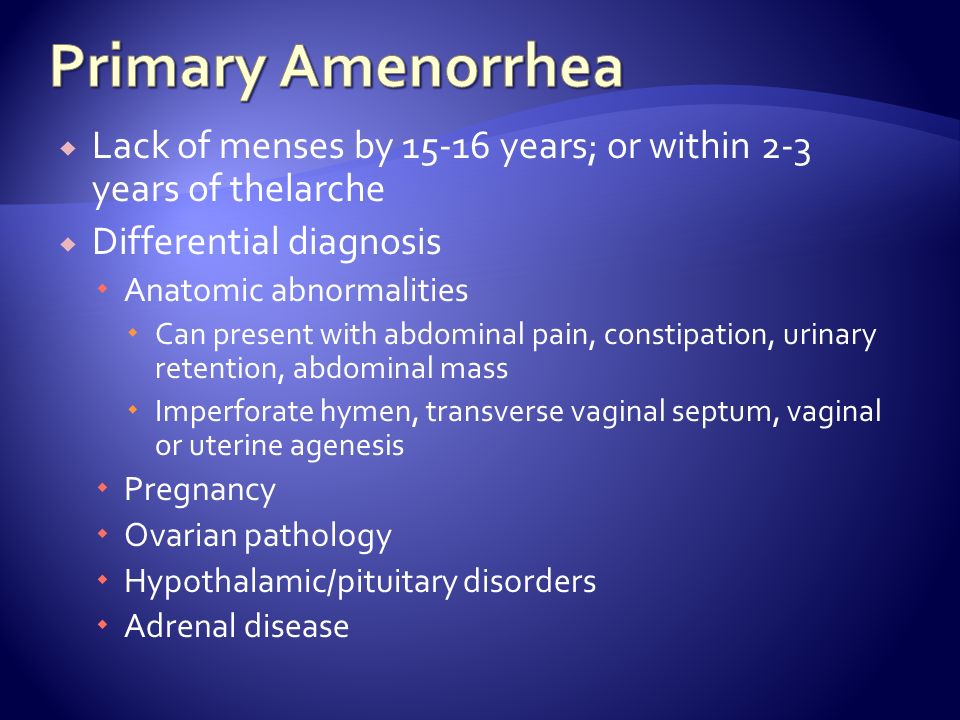
Living With
How can I take care of myself if I have amenorrhea?
Amenorrhea can affect bone health. It’s important to eat a calcium-fortified diet and exercise regularly.
When should I see my healthcare provider about amenorrhea?
You should call your healthcare provider if you miss three months of periods or miss a period and:
- Have trouble with balance, coordination or vision, which could indicate a more serious condition.
- Produce breast milk when you have not given birth.
- Notice excessive body hair growth.
- Are older than 15 and haven’t gotten your first period yet.
What else should I ask my provider?
When you talk to your healthcare provider, ask:
- What is causing the amenorrhea?
- What are my treatment options, and what are the risks and benefits to each?
- Do I need to see an endocrinologist for hormonal treatments?
- Can I still get pregnant if I have amenorrhea?
- Once my period returns, can I get amenorrhea again?
A note from Cleveland Clinic
If you’re an older teenager (15+) who hasn’t gotten a period yet, or you’ve had a normal menstrual cycle but now you’re missing periods, talk to your healthcare provider.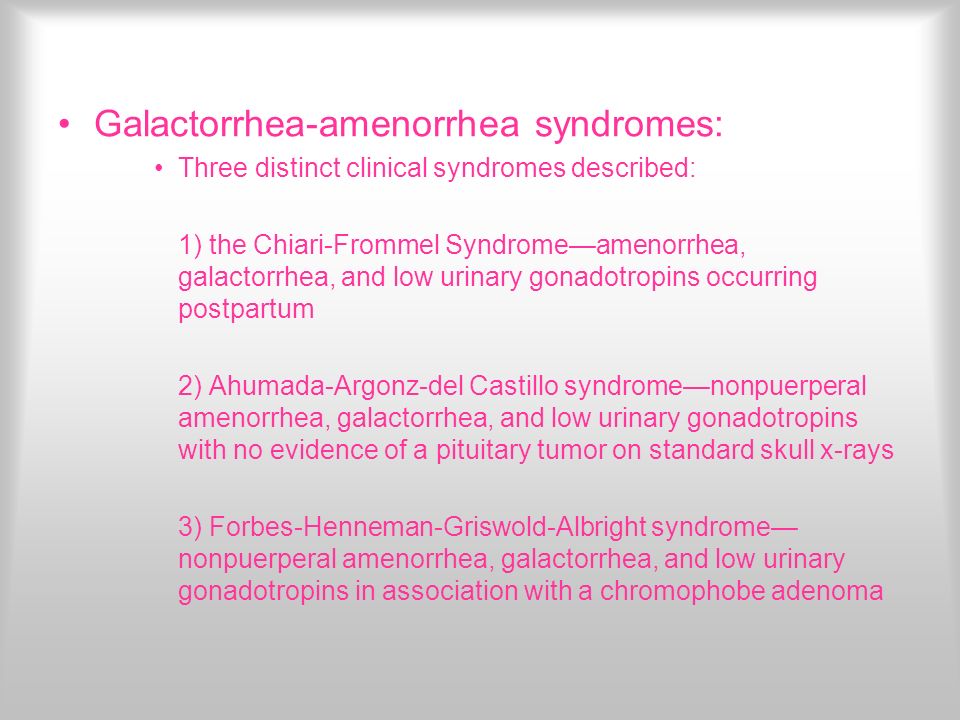 Amenorrhea is usually the sign of a treatable condition. Once your provider figures out what’s causing missed periods, you can get care to regulate your cycle. You may need lifestyle changes or hormonal treatment to help resume normal menstrual cycles.
Amenorrhea is usually the sign of a treatable condition. Once your provider figures out what’s causing missed periods, you can get care to regulate your cycle. You may need lifestyle changes or hormonal treatment to help resume normal menstrual cycles.
Amenorrhea & Secondary Amenorrhea: Causes, Diagnosis & Treatment
Overview
What is amenorrhea?
Amenorrhea is when you don’t get your monthly period. It can be temporary or permanent. Amenorrhea can result from a change in function or a problem with some part of the female reproductive system.
There are times when you’re not supposed to get your period, such as before puberty, during pregnancy and after menopause. If amenorrhea lasts for more than three months, it should be investigated.
How does the menstrual cycle work?
A complex system of hormones controls the menstrual cycle. Every month, hormones prepare the body for pregnancy. Ovulation then occurs. If there is no pregnancy, the cycle ends with the uterus shedding its lining.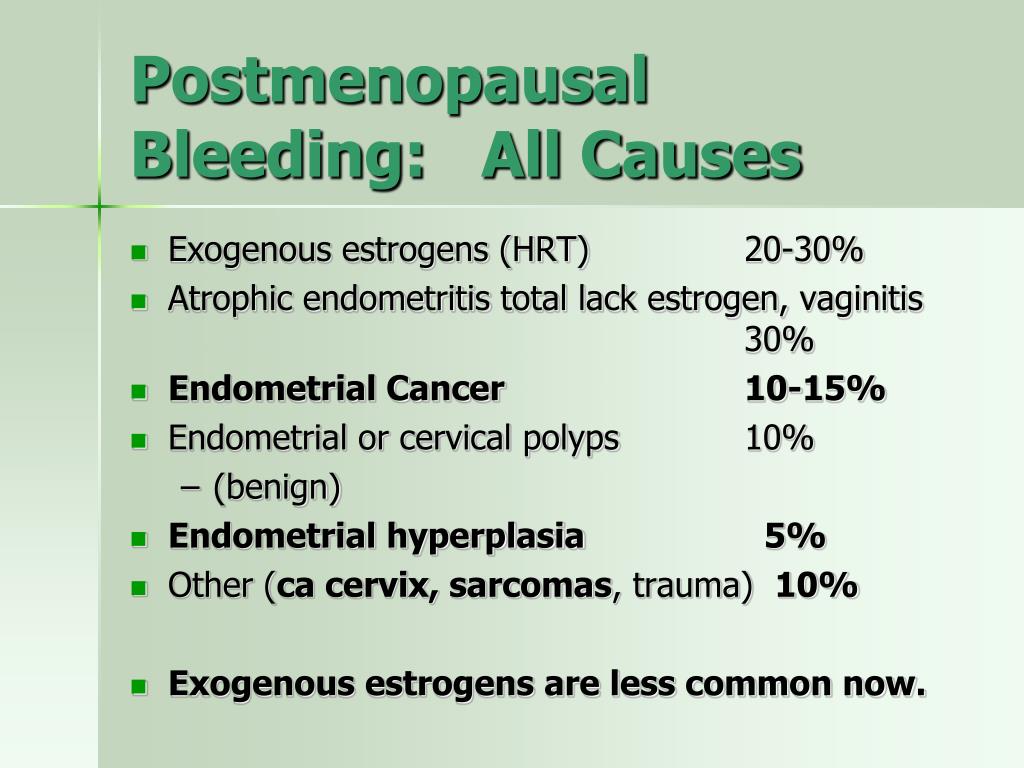 That shedding is the menstrual period.
That shedding is the menstrual period.
The hormones responsible for this cycle originate in different parts of the body. A dysfunction in any of these parts can prevent a person from getting a period:
- Hypothalamus, which controls the pituitary gland.
- Pituitary gland, called “the master gland,” which produces the hormones that instruct the ovaries to ovulate.
- Ovaries, which produce the egg for ovulation and the hormones estrogen and progesterone.
- Uterus, which responds to the hormones and prepares the lining. This lining sheds as the menstrual period if there’s no pregnancy.
What are the types of amenorrhea?
There are two classifications of amenorrhea:
- Primary amenorrhea is when you haven’t gotten a first period by age 15 or within five years of the first signs of puberty. It can happen due to changes in organs, glands and hormones related to menstruation.

- Secondary amenorrhea is when you’ve been getting regular periods, but you stop getting your period for at least three months, or you stop your menses for six months when they were previously irregular. Causes can include pregnancy, stress and illness.
Who is at risk for amenorrhea?
Risk factors for amenorrhea include:
- Family history of amenorrhea or early menopause.
- Genetic or chromosomal condition that affects your menstrual cycle.
- Obesity or being underweight.
- Eating disorder.
- Over-exercising.
- Poor diet.
- Stress.
- Chronic illness.
Symptoms and Causes
What causes amenorrhea?
The different types of amenorrhea have different causes.
Common causes of primary amenorrhea include:
- Chromosomal or genetic problem with the ovaries (the female sex organs that hold the eggs).
- Hormonal issues stemming from problems with the hypothalamus or the pituitary gland.

- Structural problem with the reproductive organs, such as missing parts of the reproductive system.
Common causes of secondary amenorrhea include:
Other causes of secondary amenorrhea can include:
- Stress.
- Poor nutrition.
- Weight changes — extreme weight loss or obesity.
- Exercising associated with low weight.
- Ongoing illness or chronic illness.
You may also have conditions that can cause secondary amenorrhea:
- Primary ovarian insufficiency, when you experience menopause before age 40.
- Hypothalamus disorders, such as functional hypothalamic amenorrhea (FHA) — which is also called hypothalamic amenorrhea (HA). FHA is a condition where amenorrhea is associated with stress or weight loss, but isn’t clearly caused by an organic issue with a woman’s body.
- Pituitary disorders, such as a benign pituitary tumor or excessive production of prolactin.
- Other hormonal problems, such as polycystic ovary syndrome, adrenal disorders or hypothyroidism.

- Ovarian tumors.
- Surgery to remove uterus or ovaries.
What are the symptoms of amenorrhea?
The main symptom is the lack of periods. Other symptoms depend on the cause. You may experience:
Diagnosis and Tests
How is amenorrhea diagnosed?
If you miss a period, contact your healthcare provider. Your provider will ask you about your symptoms and medical history. If amenorrhea occurred because of pregnancy, you can start prenatal care. If it’s happening because of menopause, there is help if symptoms are uncomfortable. Missed periods leading to menopause usually begin in your 40s. Your provider will perform a physical exam and a pelvic exam.
Will I need any tests to diagnose amenorrhea?
Your healthcare provider may want to do some tests, including:
- Pregnancy test.
- Blood tests to check hormone levels and detect thyroid or adrenal gland disorders.
- Genetic testing, if you have primary ovarian insufficiency and are younger than 40.

- MRI, if your provider suspects a problem with the pituitary gland or hypothalamus.
Do I need to keep track of when my periods happened?
Diagnosing amenorrhea can be challenging. If the cause of amenorrhea isn’t obvious, such as pregnancy, your provider may ask you to keep a record of changes in your menstrual cycle. This history of your periods can help your provider figure out a diagnosis.
Using an app or a journal, note:
- How long your periods last.
- When you had your last period.
- Medications you are taking.
- Changes in your diet or exercise routine.
- Emotional challenges you’re having, such as stress.
Management and Treatment
How is amenorrhea treated?
If your period stopped because of menopause or pregnancy, your provider will not need to treat it. In other cases, your treatment will depend on the cause and may include:
- Losing weight through dieting and exercise (if excess weight is the cause).

- Gaining weight through an individualized diet plan (if extreme weight loss is the cause).
- Stress management techniques.
- Changing exercise levels.
- Hormonal treatment (medication), as prescribed by your healthcare provider.
- Surgery (in rare cases).
In addition, your healthcare provider may recommend some treatments to help with the side effects of amenorrhea:
Amenorrhea may be a symptom of anorexia nervosa, an eating disorder. If you or a loved one has this condition, talk to a healthcare provider immediately so you can get the right treatment.
Will I need surgery for amenorrhea?
Surgery for amenorrhea is rare. Your healthcare provider may recommend it if you have:
- Genetic or chromosomal problems.
- Pituitary tumor.
- Uterine scar tissue.
Prevention
How can I prevent amenorrhea?
Living a healthy lifestyle can help prevent some causes of secondary amenorrhea. Try to:
Try to:
- Maintain a healthy weight and eat a healthy diet.
- Be aware of your menstrual cycle (so you’ll know if you miss a period).
- Get regular gynecological appointments, including having a pelvic exam and Pap test.
- Get regular and adequate sleep.
Outlook / Prognosis
Will my period return?
Typically, your period will return once you treat the underlying cause. However, it may take time to become regular again.
In some cases, you may have a health problem that means you’ll never have a period. If that is the case, your provider can talk to you about fertility options if you wish to have a baby.
Are there complications of amenorrhea?
Amenorrhea is not life-threatening. However, some causes may lead to increased risks over the long term, so amenorrhea should always be evaluated. Researchers have found a greater risk of hip and wrist fractures in people with amenorrhea. You may also be at high risk for bone thinning and fertility difficulties.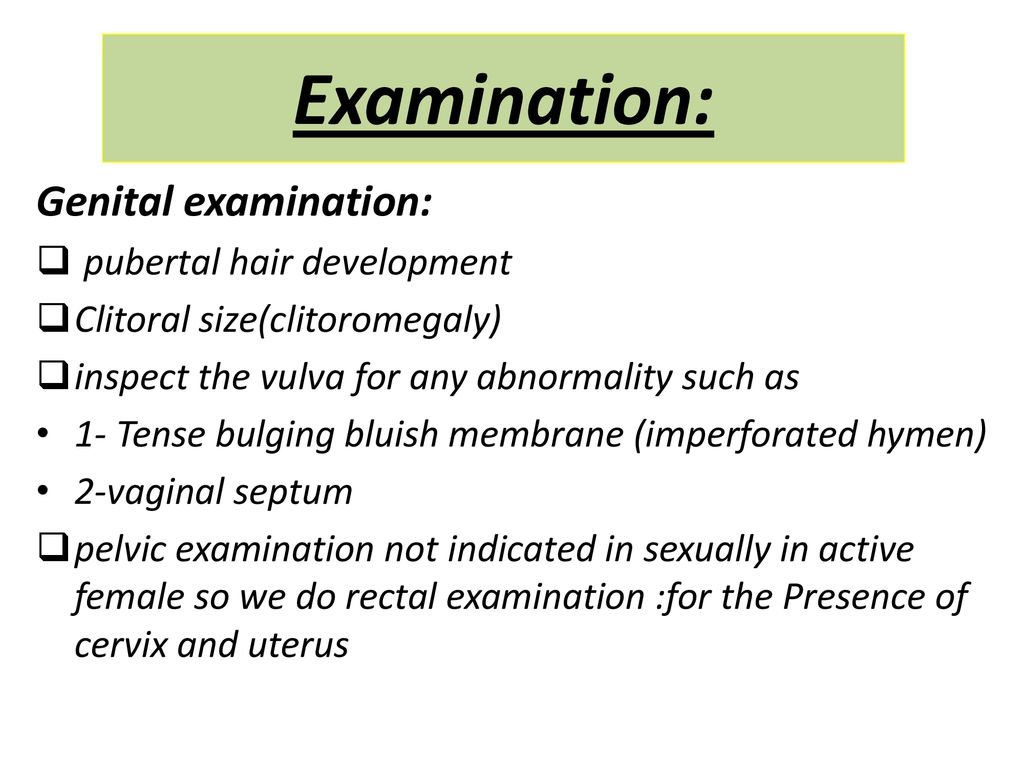
What are the outcomes for people with amenorrhea?
Your particular outcome will depend on the cause. For example, if you have PCOS, you will likely need lifelong care to prevent health complications and to establish regular cycles.
Living With
How can I take care of myself if I have amenorrhea?
Amenorrhea can affect bone health. It’s important to eat a calcium-fortified diet and exercise regularly.
When should I see my healthcare provider about amenorrhea?
You should call your healthcare provider if you miss three months of periods or miss a period and:
- Have trouble with balance, coordination or vision, which could indicate a more serious condition.
- Produce breast milk when you have not given birth.
- Notice excessive body hair growth.
- Are older than 15 and haven’t gotten your first period yet.
What else should I ask my provider?
When you talk to your healthcare provider, ask:
- What is causing the amenorrhea?
- What are my treatment options, and what are the risks and benefits to each?
- Do I need to see an endocrinologist for hormonal treatments?
- Can I still get pregnant if I have amenorrhea?
- Once my period returns, can I get amenorrhea again?
A note from Cleveland Clinic
If you’re an older teenager (15+) who hasn’t gotten a period yet, or you’ve had a normal menstrual cycle but now you’re missing periods, talk to your healthcare provider.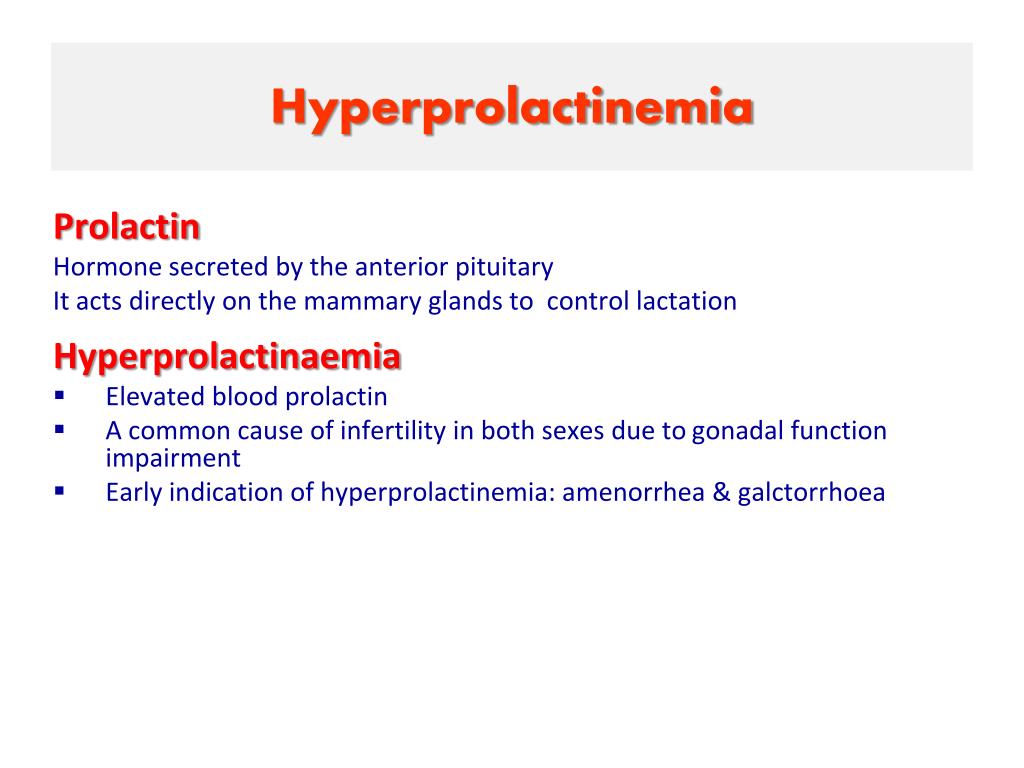 Amenorrhea is usually the sign of a treatable condition. Once your provider figures out what’s causing missed periods, you can get care to regulate your cycle. You may need lifestyle changes or hormonal treatment to help resume normal menstrual cycles.
Amenorrhea is usually the sign of a treatable condition. Once your provider figures out what’s causing missed periods, you can get care to regulate your cycle. You may need lifestyle changes or hormonal treatment to help resume normal menstrual cycles.
Amenorrhea & Secondary Amenorrhea: Causes, Diagnosis & Treatment
Overview
What is amenorrhea?
Amenorrhea is when you don’t get your monthly period. It can be temporary or permanent. Amenorrhea can result from a change in function or a problem with some part of the female reproductive system.
There are times when you’re not supposed to get your period, such as before puberty, during pregnancy and after menopause. If amenorrhea lasts for more than three months, it should be investigated.
How does the menstrual cycle work?
A complex system of hormones controls the menstrual cycle. Every month, hormones prepare the body for pregnancy. Ovulation then occurs. If there is no pregnancy, the cycle ends with the uterus shedding its lining. That shedding is the menstrual period.
That shedding is the menstrual period.
The hormones responsible for this cycle originate in different parts of the body. A dysfunction in any of these parts can prevent a person from getting a period:
- Hypothalamus, which controls the pituitary gland.
- Pituitary gland, called “the master gland,” which produces the hormones that instruct the ovaries to ovulate.
- Ovaries, which produce the egg for ovulation and the hormones estrogen and progesterone.
- Uterus, which responds to the hormones and prepares the lining. This lining sheds as the menstrual period if there’s no pregnancy.
What are the types of amenorrhea?
There are two classifications of amenorrhea:
- Primary amenorrhea is when you haven’t gotten a first period by age 15 or within five years of the first signs of puberty. It can happen due to changes in organs, glands and hormones related to menstruation.

- Secondary amenorrhea is when you’ve been getting regular periods, but you stop getting your period for at least three months, or you stop your menses for six months when they were previously irregular. Causes can include pregnancy, stress and illness.
Who is at risk for amenorrhea?
Risk factors for amenorrhea include:
- Family history of amenorrhea or early menopause.
- Genetic or chromosomal condition that affects your menstrual cycle.
- Obesity or being underweight.
- Eating disorder.
- Over-exercising.
- Poor diet.
- Stress.
- Chronic illness.
Symptoms and Causes
What causes amenorrhea?
The different types of amenorrhea have different causes.
Common causes of primary amenorrhea include:
- Chromosomal or genetic problem with the ovaries (the female sex organs that hold the eggs).
- Hormonal issues stemming from problems with the hypothalamus or the pituitary gland.

- Structural problem with the reproductive organs, such as missing parts of the reproductive system.
Common causes of secondary amenorrhea include:
Other causes of secondary amenorrhea can include:
- Stress.
- Poor nutrition.
- Weight changes — extreme weight loss or obesity.
- Exercising associated with low weight.
- Ongoing illness or chronic illness.
You may also have conditions that can cause secondary amenorrhea:
- Primary ovarian insufficiency, when you experience menopause before age 40.
- Hypothalamus disorders, such as functional hypothalamic amenorrhea (FHA) — which is also called hypothalamic amenorrhea (HA). FHA is a condition where amenorrhea is associated with stress or weight loss, but isn’t clearly caused by an organic issue with a woman’s body.
- Pituitary disorders, such as a benign pituitary tumor or excessive production of prolactin.
- Other hormonal problems, such as polycystic ovary syndrome, adrenal disorders or hypothyroidism.

- Ovarian tumors.
- Surgery to remove uterus or ovaries.
What are the symptoms of amenorrhea?
The main symptom is the lack of periods. Other symptoms depend on the cause. You may experience:
Diagnosis and Tests
How is amenorrhea diagnosed?
If you miss a period, contact your healthcare provider. Your provider will ask you about your symptoms and medical history. If amenorrhea occurred because of pregnancy, you can start prenatal care. If it’s happening because of menopause, there is help if symptoms are uncomfortable. Missed periods leading to menopause usually begin in your 40s. Your provider will perform a physical exam and a pelvic exam.
Will I need any tests to diagnose amenorrhea?
Your healthcare provider may want to do some tests, including:
- Pregnancy test.
- Blood tests to check hormone levels and detect thyroid or adrenal gland disorders.
- Genetic testing, if you have primary ovarian insufficiency and are younger than 40.

- MRI, if your provider suspects a problem with the pituitary gland or hypothalamus.
Do I need to keep track of when my periods happened?
Diagnosing amenorrhea can be challenging. If the cause of amenorrhea isn’t obvious, such as pregnancy, your provider may ask you to keep a record of changes in your menstrual cycle. This history of your periods can help your provider figure out a diagnosis.
Using an app or a journal, note:
- How long your periods last.
- When you had your last period.
- Medications you are taking.
- Changes in your diet or exercise routine.
- Emotional challenges you’re having, such as stress.
Management and Treatment
How is amenorrhea treated?
If your period stopped because of menopause or pregnancy, your provider will not need to treat it. In other cases, your treatment will depend on the cause and may include:
- Losing weight through dieting and exercise (if excess weight is the cause).

- Gaining weight through an individualized diet plan (if extreme weight loss is the cause).
- Stress management techniques.
- Changing exercise levels.
- Hormonal treatment (medication), as prescribed by your healthcare provider.
- Surgery (in rare cases).
In addition, your healthcare provider may recommend some treatments to help with the side effects of amenorrhea:
Amenorrhea may be a symptom of anorexia nervosa, an eating disorder. If you or a loved one has this condition, talk to a healthcare provider immediately so you can get the right treatment.
Will I need surgery for amenorrhea?
Surgery for amenorrhea is rare. Your healthcare provider may recommend it if you have:
- Genetic or chromosomal problems.
- Pituitary tumor.
- Uterine scar tissue.
Prevention
How can I prevent amenorrhea?
Living a healthy lifestyle can help prevent some causes of secondary amenorrhea.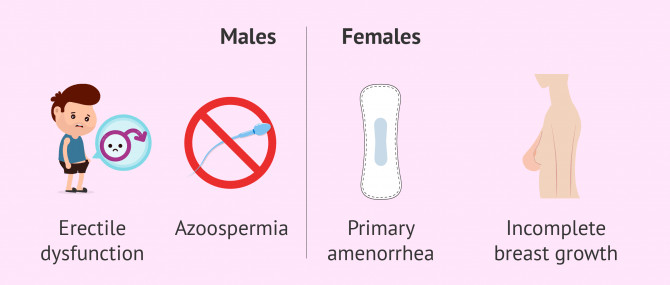 Try to:
Try to:
- Maintain a healthy weight and eat a healthy diet.
- Be aware of your menstrual cycle (so you’ll know if you miss a period).
- Get regular gynecological appointments, including having a pelvic exam and Pap test.
- Get regular and adequate sleep.
Outlook / Prognosis
Will my period return?
Typically, your period will return once you treat the underlying cause. However, it may take time to become regular again.
In some cases, you may have a health problem that means you’ll never have a period. If that is the case, your provider can talk to you about fertility options if you wish to have a baby.
Are there complications of amenorrhea?
Amenorrhea is not life-threatening. However, some causes may lead to increased risks over the long term, so amenorrhea should always be evaluated. Researchers have found a greater risk of hip and wrist fractures in people with amenorrhea. You may also be at high risk for bone thinning and fertility difficulties.
What are the outcomes for people with amenorrhea?
Your particular outcome will depend on the cause. For example, if you have PCOS, you will likely need lifelong care to prevent health complications and to establish regular cycles.
Living With
How can I take care of myself if I have amenorrhea?
Amenorrhea can affect bone health. It’s important to eat a calcium-fortified diet and exercise regularly.
When should I see my healthcare provider about amenorrhea?
You should call your healthcare provider if you miss three months of periods or miss a period and:
- Have trouble with balance, coordination or vision, which could indicate a more serious condition.
- Produce breast milk when you have not given birth.
- Notice excessive body hair growth.
- Are older than 15 and haven’t gotten your first period yet.
What else should I ask my provider?
When you talk to your healthcare provider, ask:
- What is causing the amenorrhea?
- What are my treatment options, and what are the risks and benefits to each?
- Do I need to see an endocrinologist for hormonal treatments?
- Can I still get pregnant if I have amenorrhea?
- Once my period returns, can I get amenorrhea again?
A note from Cleveland Clinic
If you’re an older teenager (15+) who hasn’t gotten a period yet, or you’ve had a normal menstrual cycle but now you’re missing periods, talk to your healthcare provider. Amenorrhea is usually the sign of a treatable condition. Once your provider figures out what’s causing missed periods, you can get care to regulate your cycle. You may need lifestyle changes or hormonal treatment to help resume normal menstrual cycles.
Amenorrhea: An Approach to Diagnosis and Management
1. Practice Committee of American Society for Reproductive Medicine. Current evaluation of amenorrhea. Fertil Steril.
2008;90(5 suppl):S219–S225….
2. Speroff L, Fritz MA. Clinical Gynecologic Endocrinology and Infertility. 7th ed. Philadelphia, Pa.: Lippincott Williams & Wilkins: 2005:401–464.
3. Euling SY,
Herman-Giddens ME,
Lee PA,
et al.
Examination of US puberty-timing data from 1940 to 1994 for secular trends: panel findings. Pediatrics.
2008;121(suppl 3):S172–S191.
4. Reindollar RH,
Novak M,
Tho SP,
McDonough PG.
Adult-onset amenorrhea: a study of 262 patients. Am J Obstet Gynecol.
1986;155(3):531–543.
5. Reindollar RH,
Byrd JR,
McDonough PG.
Delayed sexual development: a study of 252 patients. Am J Obstet Gynecol.
1981;140(4):371–380.
6. Nelson LM.
Clinical practice. Primary ovarian insufficiency. N Engl J Med.
2009;360(6):606–614.
7. Gordon CM.
Clinical practice. Functional hypothalamic amenorrhea. N Engl J Med.
2010;363(4):365–371.
8. Pickett CA.
Diagnosis and management of pituitary tumors: recent advances. Prim Care.
2003;30(4):765–789.
9. Welt CK.
Primary ovarian insufficiency: a more accurate term for premature ovarian failure. Clin Endocrinol (Oxf).
2008;68(4):499–509.
10. Zieman M, Hatcher RA, Cwiak C, Darney PD, Creinin MD, Stosur HR. A Pocket Guide to Managing Contraception. New York, NY: Ardent Media; 2010.
11. Master-Hunter T,
Heiman DL.
Amenorrhea: evaluation and treatment. Am Fam Physician.
2006;73(8):1374–1382.
12. Diaz A,
Laufer MR,
Breech LL;
American Academy of Pediatrics Committee on Adolescence; American College of Obstetricians and Gynecologists Committee on Adolescent Health Care.
Menstruation in girls and adolescents: using the menstrual cycle as a vital sign. Pediatrics.
2006;118(5):2245–2250.
13. Rebar RW,
Connolly HV.
Clinical features of young women with hypergonadotropic amenorrhea. Fertil Steril.
1990;53(5):804–810.
14. d’Alva CB,
Abiven-Lepage G,
Viallon V,
et al.
Sex steroids in androgen-secreting adrenocortical tumors: clinical and hormonal features in comparison with nontumoral causes of androgen excess. Eur J Endocrinol.
2008;159(5):641–647.
15. Sybert VP,
McCauley E.
Turner’s syndrome. N Engl J Med.
2004;351(12):1227–1238.
16. Rarick LD,
Shangold MM,
Ahmed SW.
Cervical mucus and serum estradiol as predictors of response to progestin challenge. Fertil Steril.
1990;54(2):353–355.
17. Nakamura S,
Douchi T,
Oki T,
Ijuin H,
Yamamoto S,
Nagata Y.
Relationship between sonographic endometrial thickness and progestin-induced withdrawal bleeding. Obstet Gynecol.
1996;87(5 pt 1):722–725.
18. Folch M,
Pigem I,
Konje JC.
Müllerian agenesis: etiology, diagnosis, and management. Obstet Gynecol Surv.
2000;55(10):644–649.
19. Maimoun L,
Philibert P,
Bouchard P,
et al.
Primary amenorrhea in four adolescents revealed 5α-reductase deficiency confirmed by molecular analysis. Fertil Steril.
2011;95(2):804.e1–e5.
20. Capito C,
Leclair MD,
Arnaud A,
et al.
46,XY pure gonadal dysgenesis: clinical presentations and management of the tumor risk. J Pediatr Urol.
2011;7(1):72–75.
21. Yu D,
Wong YM,
Cheong Y,
Xia E,
Li TC.
Asherman syndrome—one century later. Fertil Steril.
2008;89(4):759–779.
22. van Noord PA,
Dubas JS,
Dorland M,
Boersma H,
te Velde E.
Age at natural menopause in a population-based screening cohort: the role of menarche, fecundity, and lifestyle factors. Fertil Steril.
1997;68(1):95–102.
23. Coulam CB,
Adamson SC,
Annegers JF.
Incidence of premature ovarian failure. Obstet Gynecol.
1986;67(4):604–606.
24. van Kasteren YM,
Schoemaker J.
Premature ovarian failure: a systematic review on therapeutic interventions to restore ovarian function and achieve pregnancy. Hum Reprod Update.
1999;5(5):483–492.
25. Trenor CC III,
Chung RJ,
Michelson AD,
et al.
Hormonal contraception and thrombotic risk: a multidisciplinary approach. Pediatrics.
2011;127(2):347–357.
26. Alper MM,
Jolly EE,
Garner PR.
Pregnancies after premature ovarian failure. Obstet Gynecol.
1986;67(3 suppl):59S–62S.
27. Management of osteoporosis in postmenopausal women: 2010 position statement of The North American Menopause Society. Menopause.
2010;17(1):25–54.
28. Caronia LM,
Martin C,
Welt CK,
et al.
A genetic basis for functional hypothalamic amenorrhea. N Engl J Med.
2011;364(3):215–225.
29. Bachelot A,
Rouxel A,
Massin N,
et al.;
POF-GIS Study Group.
Phenotyping and genetic studies of 357 consecutive patients presenting with premature ovarian failure. Eur J Endocrinol.
2009;161(1):179–187.
30. Wittenberger MD,
Hagerman RJ,
Sherman SL,
et al.
The FMR1 premutation and reproduction. Fertil Steril.
2007;87(3):456–465.
31. Nattiv A,
Loucks AB,
Manore MM,
Sanborn CF,
Sundgot-Borgen J,
Warren MP;
American College of Sports Medicine.
American College of Sports Medicine position stand. The female athlete triad. Med Sci Sports Exerc.
2007;39(10):1867–1882.
32. Falsetti L,
Gambera A,
Barbetti L,
Specchia C.
Long-term follow-up of functional hypothalamic amenorrhea and prognostic factors. J Clin Endocrinol Metab.
2002;87(2):500–505.
33. Klibanski A,
Biller BM,
Schoenfeld DA,
Herzog DB,
Saxe VC.
The effects of estrogen administration on trabecular bone loss in young women with anorexia nervosa. J Clin Endocrinol Metab.
1995;80(3):898–904.
34. Gordon CM,
Grace E,
Emans SJ,
et al.
Effects of oral dehydroepiandrosterone on bone density in young women with anorexia nervosa: a randomized trial. J Clin Endocrinol Metab.
2002;87(11):4935–4941.
35. Strokosch GR,
Friedman AJ,
Wu SC,
Kamin M.
Effects of an oral contraceptive (norgestimate/ethinyl estradiol) on bone mineral density in adolescent females with anorexia nervosa: a double-blind, placebo-controlled study. J Adolesc Health.
2006;39(6):819–827.
36. Sim LA,
McGovern L,
Elamin MB,
Swiglo BA,
Erwin PJ,
Montori VM.
Effect on bone health of estrogen preparations in premenopausal women with anorexia nervosa: a systematic review and meta-analyses. Int J Eat Disord.
2010;43(3):218–225.
37. Chou SH,
Chamberland JP,
Liu X,
et al.
Leptin is an effective treatment for hypothalamic amenorrhea. Proc Natl Acad Sci USA.
2011;108(16):6585–6590.
38. Welt CK,
Chan JL,
Bullen J,
et al.
Recombinant human leptin in women with hypothalamic amenorrhea. N Engl J Med.
2004;351(10):987–997.
39. Briggs GG, Freeman RK, Yaffee SJ. Drugs in Pregnancy and Lactation: a Reference Guide to Fetal and Neonatal Risk. 8th ed. Philadelphia, Pa.: Lippincott Williams & Wilkins; 2008:49–51.
40. Shaw ND,
Seminara SB,
Welt CK,
et al.
Expanding the phenotype and genotype of female GnRH deficiency. J Clin Endocrinol Metab.
2011;96(3):E566–E576.
41. Azziz R,
Carmina E,
Dewailly D,
et al.;
Androgen Excess Society.
Positions statement: criteria for defining polycystic ovary syndrome as a predominantly hyperandrogenic syndrome: an Androgen Excess Society guideline. J Clin Endocrinol Metab.
2006;91(11):4237–4245.
42. Rotterdam ESHRE/ASRM-Sponsored PCOS Consensus Workshop Group.
Revised 2003 consensus on diagnostic criteria and long-term health risks related to polycystic ovary syndrome (PCOS). Hum Reprod.
2004;19(1):41–47.
43. Waggoner W,
Boots LR,
Azziz R.
Total testosterone and DHEAS levels as predictors of androgen-secreting neoplasms: a populational study. Gynecol Endocrinol.
1999;13(6):394–400.
44. American College of Obstetricians and Gynecologists.
ACOG practice bulletin no. 108: polycystic ovary syndrome. Obstet Gynecol.
2009;114(4):936–949.
45. Navaratnarajah R,
Pillay OC,
Hardiman P.
Polycystic ovary syndrome and endometrial cancer. Semin Reprod Med.
2008;26(1):62–71.
46. Papaioannou S,
Tzafettas J.
Anovulation with or without PCO, hyperandrogenaemia and hyperinsulinaemia as promoters of endometrial and breast cancer. Best Pract Res Clin Obstet Gynaecol.
2010;24(1):19–27.
47. Banaszewska B,
Pawelczyk L,
Spaczynski RZ,
Dziura J,
Duleba AJ.
Effects of simvastatin and oral contraceptive agent on polycystic ovary syndrome: prospective, randomized, crossover trial. J Clin Endocrinol Metab.
2007;92(2):456–461.
48. Tang T,
Lord JM,
Norman RJ,
Yasmin E,
Balen AH.
Insulin-sensitising drugs (metformin, rosiglitazone, pioglitazone, D-chiro-inositol) for women with polycystic ovary syndrome, oligo amenorrhoea and sub-fertility. Cochrane Database Syst Rev.
2010;(1):CD003053.
49. Tan BK,
Adya R,
Chen J,
Lehnert H,
Sant Cassia LJ,
Randeva HS.
Metformin treatment exerts antiinvasive and antimetastatic effects in human endometrial carcinoma cells. J Clin Endocrinol Metab.
2011;96(3):808–816.
50. Bridger T,
MacDonald S,
Baltzer F,
Rodd C.
Randomized placebo-controlled trial of metformin for adolescents with polycystic ovary syndrome. Arch Pediatr Adolesc Med.
2006;160(3):241–246.
51. Eisenhardt S,
Schwarzmann N,
Henschel V,
et al.
Early effects of metformin in women with polycystic ovary syndrome: a prospective randomized, double-blind, placebo-controlled trial. J Clin Endocrinol Metab.
2006;91(3):946–952.
52. Glueck CJ,
Wang P,
Fontaine R,
Tracy T,
Sieve-Smith L.
Metformin-induced resumption of normal menses in 39 of 43 (91%) previously amenorrheic women with the polycystic ovary syndrome. Metabolism.
1999;48(4):511–519.
53. Moghetti P,
Castello R,
Negri C,
et al.
Metformin effects on clinical features, endocrine and metabolic profiles, and insulin sensitivity in polycystic ovary syndrome: a randomized, double-blind, placebo-controlled 6-month trial, followed by open, long-term clinical evaluation. J Clin Endocrinol Metab.
2000;85(1):139–146.
54. Kakuno Y,
Amino N,
Kanoh M,
et al.
Menstrual disturbances in various thyroid diseases. Endocr J.
2010;57(12):1017–1022.
Secondary Amenorrhea – an overview
Evaluation and Treatment
Any woman who develops secondary amenorrhea should be evaluated with a pregnancy test because pregnancy is the most common cause of this condition. A serum β subunit hCG measurement is the most sensitive test for this purpose and a sample should be drawn even in women denying sexual activity. Also, a thorough history should include questions about stresses, weight loss, exercise, medications or drugs, menopausal symptoms, galactorrhea, and history of uterine instrumentation or infection. It is important to ask about such symptoms as headaches, visual field changes, and fatigue, which could be signs of hypothalamic or pituitary disease.
Physical examination should proceed as it would for patients being evaluated for primary amenorrhea, including an evaluation of the body mass index, an inspection for signs of systemic illness, and an evaluation of the skin, breasts, and genital tissue for signs of atrophy associated with estrogen deficiency. Also, the breasts should be inspected for galactorrhea. It is also important to note signs of hirsutism, skin pigmentation, or acne, which may suggest etiologies such as PCOS.
Laboratory evaluation is geared toward the most common causes of secondary amenorrhea and should include a serum hCG measurement to rule out pregnancy, a serum FSH to evaluate for ovarian failure, a prolactin level to rule out hyperprolactinemia, and a thyrotropin level to rule out thyroid disease. A testosterone level and serum dehydroepiandrosterone sulfate (DHEA‐S) can be checked in patients exhibiting signs of hyperandrogenism (such as can occur with PCOS or androgen‐secreting tumors).
As far as treatment goes, amenorrhea is only a symptom. Treatment is aimed at correcting the underlying disorder. For underweight or athletic women, appropriate caloric intake coupled with dietary counseling can be effective in correcting functional hypothalamic amenorrhea. A multidisciplinary approach is most useful for women suspected of having an eating disorder.
If the cause of secondary amenorrhea is hyperprolactinemia, the source of the excess prolactin needs to be corrected. Also, dopamine agonist medications can suppress prolactin levels and lead to a resumption of menstrual cycles. Women with premature ovarian failure should be counseled about the risks and benefits of hormone replacement therapy, and women diagnosed with Asherman’s syndrome may benefit from hysteroscopic resection of the uterine scar tissue and prolonged estrogen administration to promote regrowth of the endometrial lining.
Besides attempting to avert long‐term sequelae of the disease process, treatment goals can be divided into two categories: to attain fertility or to establish normal menses. For infertility, ovulation‐inducing agents are commonly used; these include clomiphene citrate, human menopausal gonadotropin, FSH, and GnRH. These can have good success rates in achieving pregnancy when the cause of the infertility is anovulation or hypo‐ovulation. For establishing normal menses, any cyclic estrogen‐progesterone combinations given as oral contraceptives will restore menses. Progesterone alone is less useful and may not stimulate the endometrium enough to produce menses. Progesterone can be useful to reassure the patient or to counteract hyperplasia of the endometrium that can result from unopposed estrogen due to anovulation with, for example, obesity. Commonly used agents are medroxyprogesterone at 5 to 10 mg/day for 5 to 10 days to induce menstruation or micronized progesterone as a gel, suppository, capsule, or injection. The treatment for women with PCOS is described below.
Secondary Amenorrhea – StatPearls – NCBI Bookshelf
Continuing Education Activity
Secondary amenorrhea occurs when a patient who has passed menarche goes six months or longer without menses. While some sources only require three months without menses to diagnose amenorrhea, the American College of Obstetricians and Gynecologists uses the former definition. There are many causes of secondary amenorrhea, and thus it is important to have an interprofessional team involved in the investigation and management of this disorder. This activity reviews the evaluation and treatment of secondary amenorrhea and explains the role of the interprofessional team in the management and care of patients with this condition.
Objectives:
Identify the etiology of secondary amenorrhea, and how it differs from primary amenorrhea.
Summarize treatment options for secondary amenorrhea by underlying etiology.
Review the potential differential diagnoses for secondary amenorrhea.
Explain interprofessional team strategies for improving care coordination and communication to advance diagnosis and care of secondary amenorrhea to improve outcomes.
Access free multiple choice questions on this topic.
Introduction
Secondary amenorrhea occurs when a patient who has passed menarche goes six months or longer without menses. While some sources only require three months without menses to diagnose amenorrhea, the American College of Obstetricians and Gynecologists uses the former definition.[1][2]
Etiology
There are three general causes of secondary amenorrhea: hormonal disturbance leading to a lack of a normal menstrual cycle, physical damage to the endometrium, which prevents its growth, or obstruction of the outflow path of the menstrual blood.
Epidemiology
Pregnancy, lactation, and menopause are common, physiologic causes of secondary amenorrhea. The prevalence of secondary amenorrhea due to all other causes is approximately 2% to 5%.[3][4]
Pathophysiology
There are many potential causes of secondary amenorrhea. Hormonal causes include pregnancy, lactation, thyroid dysfunction, hyperprolactinemia, hyperandrogenism (including polycystic ovarian syndrome), hypogonadotropic hypogonadism (hypothalamic-pituitary dysfunction), and suppression of the endometrium by hormonal birth control. Structural causes include damage to the endometrium (Asherman syndrome) and obstruction of the outflow tract (cervical stenosis).
History and Physical
History in a patient with secondary amenorrhea should include a full menstrual history. It is important to ascertain what birth control method the patient is using, as the progestin-containing birth control methods (including combined oral contraceptive pills) suppress the growth of the endometrium and may lead to secondary amenorrhea. The pattern of menses is also important – does the patient have a long history of infrequent and irregular periods (suggesting anovulation), or was the amenorrhea abrupt? Were there any inciting events before the onset of secondary amenorrhea, such as childbirth, surgery, trauma, pelvic infection, or D and C? Patients should be asked about headaches, vision changes, and galactorrhea to assess for hyperprolactinemia from pituitary prolactinoma. Thyroid symptoms should also be evaluated (fatigue, weight changes, skin/hair/nail changes, palpitations, tachycardia). Hirsutism and acne suggest PCOS, so patients should be asked about unwanted hair growth and acne. Patients should be asked about stressors and exercise routines, as excessive stress or exercise may lead to hypogonadotropic hypogonadism.
Physical examination should include calculation of body mass index (BMI), as well as assessment of acanthosis nigricans, hirsutism, acne, and virilization.
Evaluation
The first step in the evaluation of any patient with secondary amenorrhea is a urine pregnancy test. Every contraceptive method has a failure rate, and anyone who is menstruating is potentially fertile, regardless of age.[5][6]
If the pregnancy test is negative, consider the clinical picture: hirsutism, acne, and a long history of infrequent and irregular menses suggest polycystic ovarian syndrome. By the Rotterdam criteria, a patient may be diagnosed with PCOS if she has two of the following: clinical or chemical hyperandrogenism, oligo- or amenorrhea, or polycystic ovaries on ultrasound. So if a patient has evidence of hirsutism and oligo- or amenorrhea, she can be diagnosed with PCOS without further laboratory testing or imaging.
If history and physical exam are not consistent with PCOS, a TSH should be ordered. Both hyper- and hypothyroidism can lead to menstrual dysfunction.
If TSH is normal, check serum prolactin. Elevated serum prolactin suggests prolactinoma.
If prolactin is normal, the next step is to perform a progestin challenge. First, the patient is given oral progesterone (typically medroxyprogesterone, 10mg PO qDay x10 days). After stopping the progesterone, the patient would be expected to have a withdrawal bleed. If there is no withdrawal bleed, this means that a) there is insufficient endogenous estrogen to stimulate the growth of the endometrium, b) the endometrium has been damaged and is unable to grow, or c) the outflow of menstrual blood has been obstructed.
If a patient who has a withdrawal bleed also has hirsutism, suspect PCOS, ovarian or adrenal tumors, or Cushing syndrome.
If the patient does not experience a withdrawal bleed after the progestin challenge, the next step is an estrogen-progestin challenge, in which the patient is given combined estrogen and progesterone (such as combined oral contraceptives). If the endometrium is intact and the outflow is not obstructed, the estrogen from the oral contraceptives would be expected to trigger the growth of the endometrium, and stopping the oral contraceptives should lead to a withdrawal bleed. If a patient has a negative progestin challenge (no withdrawal bleed after progesterone treatment) but a positive estrogen-progestin challenge (bleeding after one month of combined oral contraceptives), suspect hypogonadism and check FSH and estradiol.
If FSH is elevated and estradiol is low, suspect ovarian failure. (The pituitary is yelling at the ovaries to make estrogen, but they are not responding.)
If FSH is low and estradiol is low, suspect hypothalamic-pituitary dysfunction, such as due to stress, exercise, or pituitary infarct (Sheehan’s syndrome).
If the estrogen-progesterone challenge is negative (no bleeding after a month of combined oral contraceptives), suspect damage to the endometrium (Asherman’s syndrome) or outflow obstruction, such as from cervical stenosis. Transvaginal ultrasound may be performed to evaluate for hematometra (trapped menstrual blood in the uterus). Hysteroscopy would be an appropriate next step to evaluate for Asherman syndrome. If trapped blood is evacuated during cervical dilation, this suggests cervical stenosis as the cause and is also potentially curative.
Treatment / Management
Treatment depends on the underlying cause of amenorrhea.[7][8]
Polycystic ovarian syndrome is treated with weight loss, metformin for insulin resistance, and cycle control with combined oral contraceptives or endometrial protection with progestin-containing birth control methods (medroxyprogesterone acetate depot injection, etonogestrel subcutaneous implant, or levonorgestrel intrauterine system).
Hypothyroidism is treated with thyroxine replacement.
Hyperthyroidism is treated with thioamides, ablation, or surgery.
Hyperprolactinemia is treated with bromocriptine, cabergoline, or excision of prolactinoma.
Ovarian failure may be treated with hormone replacement, depending on the patient’s age, symptoms, and other risk factors.
Hypothalamic-pituitary dysfunction may be treated with lifestyle changes or with hormone replacement.
Asherman syndrome is treated with hysteroscopic lysis of adhesions.
Cervical stenosis is treated with cervical dilation.
Differential Diagnosis
Anorexia
Anxiety disorders
Congenital adrenal hyperplasia
Depression
Follicle-stimulating hormone abnormalities
Iatrogenic Cushing syndrome
Luteinizing hormone deficiency
Ovarian insufficiency
Pregnancy diagnosis
Prolactinoma
Deterrence and Patient Education
As pregnancy is the most common cause of amenorrhea, young girls should be taught to monitor their cycles and use contraception to avoid unwanted pregnancy. Moreover, it is important to take gynecological history on regular visits as amenorrhea may be a result of an endocrinological disorder. A woman should contact her provider if irregularities in menstruation arise.
Pearls and Other Issues
Always remember to order a urine pregnancy test!
Bear in mind that hormonal contraceptives inhibit the hypothalamic-pituitary axis, so patients must be off hormonal contraceptives for at least three months before testing FSH and estradiol. In addition, standard estradiol assays do not detect ethinyl estradiol, the estrogen in birth control.
Remember that it is common and not pathologic for patients on hormonal contraception to be amenorrheic. Amenorrhea on birth control does not require further evaluation unless there are other concerning symptoms.[9]
Enhancing Healthcare Team Outcomes
There are many causes of secondary amenorrhea, and thus it is important to have an interprofessional team involved in the investigation and management of this disorder. Apart from infertility, the biggest concern is the ongoing bone loss that occurs due to a lack of sex hormones. Healthcare workers, including nurse practitioners, should educate the patient on the importance of bone health while they are being worked up for the cause of secondary amenorrhea. Besides increasing calcium in the diet, the patient should participate in regular exercise. The loss of fertility in many women is also associated with significant emotional distress, and hence a referral to a mental health counselor is recommended. The outcomes of women with secondary amenorrhea depend on the cause.[5][10]
References
- 1.
- Sehemby M, Bansal P, Sarathi V, Kolhe A, Kothari K, Jadhav-Ramteke S, Lila AR, Bandgar T, Shah NS. Virilising ovarian tumors: a single-center experience. Endocr Connect. 2018 Dec;7(12):1362-1369. [PMC free article: PMC6280592] [PubMed: 30400027]
- 2.
- Maciejewska-Jeske M, Szeliga A, Męczekalski B. Consequences of premature ovarian insufficiency on women’s sexual health. Prz Menopauzalny. 2018 Sep;17(3):127-130. [PMC free article: PMC6196782] [PubMed: 30357022]
- 3.
- Martini MG, Solmi F, Krug I, Karwautz A, Wagner G, Fernandez-Aranda F, Treasure J, Micali N. Associations between eating disorder diagnoses, behaviors, and menstrual dysfunction in a clinical sample. Arch Womens Ment Health. 2016 Jun;19(3):553-7. [PubMed: 26399871]
- 4.
- Chandeying P, Pantasri T. Prevalence of conditions causing chronic anovulation and the proposed algorithm for anovulation evaluation. J Obstet Gynaecol Res. 2015 Jul;41(7):1074-9. [PubMed: 25772812]
- 5.
- Pereira K, Brown AJ. Secondary amenorrhea: Diagnostic approach and treatment considerations. Nurse Pract. 2017 Sep 21;42(9):34-41. [PubMed: 28832422]
- 6.
- Chaloutsou K, Aggelidis P, Pampanos A, Theochari E, Michala L. Premature Ovarian Insufficiency: An Adolescent Series. J Pediatr Adolesc Gynecol. 2017 Dec;30(6):615-619. [PubMed: 28502828]
- 7.
- Practice Committee of the American Society for Reproductive Medicine. Current evaluation of amenorrhea. Fertil Steril. 2006 Nov;86(5 Suppl 1):S148-55. [PubMed: 17055812]
- 8.
- Rosenfield RL. Puberty and its disorders in girls. Endocrinol Metab Clin North Am. 1991 Mar;20(1):15-42. [PubMed: 2029884]
- 9.
- Gabby LC, McDaniel KE, Gordon BJ, Al-Marayati LA. Hematometrocolpos following Low Transverse Cesarean Delivery Complicated by Uterine Dehiscence. Case Rep Obstet Gynecol. 2021;2021:5591893. [PMC free article: PMC8261190] [PubMed: 34258089]
- 10.
- Du X, Zhang W, Wang X, Yu X, Li Z, Guan Y. Follicle-Stimulating Hormone-Secreting Pituitary Adenoma Inducing Spontaneous Ovarian Hyperstimulation Syndrome, Treatment Using In Vitro Fertilization and Embryo Transfer: A Case Report. Front Endocrinol (Lausanne). 2021;12:621456. [PMC free article: PMC8264655] [PubMed: 34248835]
What is the difference between primary and secondary amenorrhea?
Author
Kristi A Tough DeSapri, MD Clinical Assistant Professor of Obstetrics and Gynecology, Director of Comprehensive Bone Center, University of Chicago Medicine Women’s Care
Kristi A Tough DeSapri, MD is a member of the following medical societies: American Society for Colposcopy and Cervical Pathology, North American Menopause Society
Disclosure: Serve(d) as a speaker or a member of a speakers bureau for: Amgen and AMAG pharmaceuticals.
Chief Editor
Richard Scott Lucidi, MD, FACOG Associate Professor of Reproductive Endocrinology and Infertility, Department of Obstetrics and Gynecology, Virginia Commonwealth University School of Medicine
Richard Scott Lucidi, MD, FACOG is a member of the following medical societies: American College of Obstetricians and Gynecologists, American Society for Reproductive Medicine
Disclosure: Nothing to disclose.
Additional Contributors
Kenneth M Bielak, MD Professor, Department of Family Medicine, University of Tennessee Health Science Center College of Medicine
Kenneth M Bielak, MD is a member of the following medical societies: American Academy of Family Physicians, American Society for Colposcopy and Cervical Pathology, American College of Sports Medicine, American Medical Society for Sports Medicine
Disclosure: Nothing to disclose.
Gayla S Harris, MD Associate Professor, Department of Obstetrics and Gynecology, University of Tennessee Health Science Center Graduate School of Medicine
Gayla S Harris, MD is a member of the following medical societies: American Society for Reproductive Medicine
Disclosure: Nothing to disclose.
Acknowledgements
Elizabeth Alderman, MD Director of Fellowship Training Program, Director of Adolescent Ambulatory Service, Professor of Clinical Pediatrics, Department of Pediatrics, Division of Adolescent Medicine, Albert Einstein College of Medicine and Children’s Hospital at Montefiore
Elizabeth Alderman, MD is a member of the following medical societies: American Academy of Pediatrics, American Pediatric Society, North American Society for Pediatric and Adolescent Gynecology, and Society for Adolescent Medicine
Disclosure: Merck Honoraria Speaking and teaching
A David Barnes, MD, PhD, MPH, FACOG Consulting Staff, Department of Obstetrics and Gynecology, Mammoth Hospital (Mammoth Lakes, California), Pioneer Valley Hospital (Salt Lake City, Utah), Warren General Hospital (Warren, Pennsylvania), and Mountain West Hospital (Tooele, Utah)
A David Barnes, MD, PhD, MPH, FACOG is a member of the following medical societies: American College of Forensic Examiners, American College of Obstetricians and Gynecologists, American Medical Association, Association of Military Surgeons of the US, and Utah Medical Association
Disclosure: Nothing to disclose.
Karim Anton Calis, PharmD, MPH, FASHP, FCCP Adjunct Clinical Investigator, Program in Developmental Endocrinology and Genetics, Eunice Kennedy Shriver National Institute of Child Health and Human Development, National Institutes of Health; Clinical Professor, Medical College of Virginia, Virginia Commonwealth University School of Pharmacy; Clinical Professor, University of Maryland School of Pharmacy
Karim Anton Calis, PharmD, MPH, FASHP, FCCP is a member of the following medical societies: American College of Clinical Pharmacy, American Society of Health-System Pharmacists, and Endocrine Society
Disclosure: Nothing to disclose.
Sharon N Covington, LCSW-C, BCD Clinical Assistant Professor, Department of Obstetrics and Gynecology, Georgetown University School of Medicine; Associate Investigator, Integrative Reproductive Medicine Unit, Reproductive Biology and Medicine Branch, National Institutes of Child Health and Human Development, National Institutes of Health; Private Practice, Covington and Hafkin and Associates; Director of Psychological Support Services, Shady Grove Fertility Reproductive Science Center
Sharon N Covington, LCSW-C, BCD is a member of the following medical societies: Academy of Certified Social Workers, American Orthopsychiatric Association, American Society for Reproductive Medicine, National Association of Social Workers, and Society for Assisted Reproductive Technologies
Disclosure: Nothing to disclose.
Lawrence M Nelson, MD, MBA Head of Integrative Reproductive Medicine Group, Intramural Research Program on Reproductive and Adult Endocrinology, National Institutes of Child Health and Human Development, National Institutes of Health
Lawrence M Nelson, MD, MBA is a member of the following medical societies: American College of Obstetricians and Gynecologists, American Society for Reproductive Medicine, Association of Professors of Gynecology and Obstetrics, Endocrine Society, and Society for Experimental Biology and Medicine
Disclosure: Nothing to disclose.
Vaishali Popat, MD, MPH Clinical Investigator, Intramural Research Program on Reproductive and Adult Endocrinology, National Institutes of Child Health and Human Development, National Institutes of Health
Vaishali Popat, MD, MPH is a member of the following medical societies: American College of Physicians and Endocrine Society
Disclosure: Nothing to disclose.
Thomas Michael Price, MD Associate Professor, Division of Reproductive Endocrinology and Infertility, Department of Obstetrics and Gynecology, Director of Reproductive Endocrinology and Infertility Fellowship Program, Duke University Medical Center
Thomas Michael Price, MD is a member of the following medical societies: Alpha Omega Alpha, American College of Obstetricians and Gynecologists, American Medical Association, American Society for Reproductive Medicine, Association of Professors of Gynecology and Obstetrics, Endocrine Society, Phi Beta Kappa, Society for Gynecologic Investigation, Society for Reproductive Endocrinology and Infertility, and South Carolina Medical Association
Disclosure: Clinical Advisors Group Consulting fee Consulting; MEDA Corp Consulting Consulting fee Consulting; Gerson Lehrman Group Advisor Consulting fee Consulting; Adiana Grant/research funds PI
Tamara Prodanov, MD Research Assistant, National Institutes of Child Health and Human Development, National Institutes of Health
Disclosure: Nothing to disclose.
Shannon D Sullivan, MD, PhD Staff Physician, Department of Endocrinology, Washington Hospital Center
Shannon D Sullivan, MD, PhD is a member of the following medical societies: American Association of Clinical Endocrinologists, American Thyroid Association, and Endocrine Society
Disclosure: Nothing to disclose. Francisco Talavera, PharmD, PhD Adjunct Assistant Professor, University of Nebraska Medical Center College of Pharmacy; Editor-in-Chief, Medscape Drug Reference
Disclosure: Medscape Salary Employment
Suzanne R Trupin, MD, FACOG Clinical Professor, Department of Obstetrics and Gynecology, University of Illinois College of Medicine at Urbana-Champaign; CEO and Owner, Women’s Health Practice; CEO and Owner, Hada Cosmetic Medicine and Midwest Surgical Center
Suzanne R Trupin, MD, FACOG is a member of the following medical societies: American Association of Gynecologic Laparoscopists, American College of Obstetricians and Gynecologists, American Institute of Ultrasound in Medicine, American Medical Association, Association of Reproductive Health Professionals, International Society for Clinical Densitometry, and North American Menopause Society
Disclosure: Nothing to disclose.
Somya Verma, MD, Fellow in Pediatric Endocrinology, National Institutes of Child Health and Human Development; Officer of United States Public Health Service Commissioned Corps
Disclosure: Nothing to disclose.
Wayne Wolfram, MD, MPH Associate Professor, Department of Emergency Medicine, Mercy St Vincent Medical Center
Wayne Wolfram, MD, MPH is a member of the following medical societies: American Academy of Emergency Medicine, American Academy of Pediatrics, and Society for Academic Emergency Medicine
Disclosure: Nothing to disclose.
Andrea L Zuckerman, MD Assistant Professor of Obstetrics/Gynecology and Pediatrics, Tufts University School of Medicine; Division Director, Pediatric and Adolescent Gynecology, Tufts Medical Center
Andrea L Zuckerman, MD is a member of the following medical societies: American College of Obstetricians and Gynecologists, Association of Professors of Gynecology and Obstetrics, Massachusetts Medical Society, North American Society for Pediatric and Adolescent Gynecology, and Society for Adolescent Medicine
Disclosure: Nothing to disclose.
Secondary amenorrhea
Secondary amenorrhea is understood as the absence of menstruation in a woman of reproductive age for 6 months or more, subject to the onset of menarche and the exclusion of pregnancy and lactation. The most common cause of secondary amenorrhea is hypothalamic dysfunction, which occurs in 35% of cases.In addition, secondary amenorrhea is caused by diseases of the pituitary gland (19%), decreased ovarian function (10%), polycystic ovary syndrome (30%) and uterine lesions (5%). Rare causes of secondary amenorrhea include: hypercortisolism, hypothyroidism, ovarian and adrenal tumors.
Secondary amenorrhea due to hypothalamic dysfunction is usually associated with a decrease in the frequency and amplitude of the pulse generator GnRH, which in turn is a consequence of weight loss, poor nutrition, stress, increased exercise, or a combination of the above.An example of such a combination can be the collective image of a modern girl who, in an effort to meet accepted beauty standards, begins to adhere to the strictest diets, work out in the gym and combine university studies with work.
Rarely, infiltrative diseases of the hypothalamus (lymphoma, histiocytosis) can lead to secondary amenorrhea. Hypothyroidism, manifested by secondary amenorrhea, is most likely due to disturbances in the production of GnRH, since its production is closely related to the production of TRH.
The single most common cause of secondary pituitary amenorrhea is hyperprolactinemia due to the presence of prolactinoma (18% of cases). Other diseases of the pituitary gland that lead to secondary amenorrhea, such as empty sella turcica, Sheehan’s syndrome, and Cushing’s disease, occur in less than 1% of cases.
Hyperprolactinemia
During the menstrual cycle, plasma prolactin levels vary from 5 to 27 ng / ml.To obtain the most adequate values of prolactin, blood sampling should not be carried out immediately after awakening the patient or after performing any procedures. Prolactin is secreted in pulses with a frequency of 14 pulses per day in the late follicular phase, up to 9 pulses per day in the late luteal phase. In addition, there are daily fluctuations in prolactin secretion, so the lowest prolactin level is observed immediately after awakening. The increase in prolactin secretion begins one hour after falling asleep and continues to increase during sleep.The peak of secretion occurs between 5 and 7 o’clock in the morning. In general, the level of prolactin in the blood serum is very sensitive to a wide variety of factors that can cause transient hyperprolactinemia, and therefore, in addition to adequately preparing the patient for a blood test, it is always necessary to re-determine the level of prolactin if elevated values are detected.
Inhibitors of prolactin production
- dopamine;
- gamma-aminobutyric acid;
- pyroglutamic acid;
- somatostatin.
Stimulants of prolactin production
- Beta endorphin.
- 17-beta etradiol.
- Enkephalins.
- GnRG.
- Histamine.
- Serotonin.
- Substance R.
- Thyrotropin-releasing hormone.
- Vasoactive intestinal peptide.
Physiological states
- Anesthesia.
- Syndrome of an empty Turkish saddle.
- Idiopathic enhancement.
- Sexual intercourse.
- Surgery and chest injury (burns, herpes, chest percussion).
- Breastfeeding.
- Nipple stimulation.
- Pregnancy.
- Postpartum period (1 to 7 days).
- Dream.
- Stress.
Hypothalamic disorders
- Tumors of various histogenesis.
- Neurotuberculosis.
- Sarcoidosis.
Pituitary disorders
- Acromegaly.
- Addison’s disease.
- Craniopharyngioma.
- Cushing’s Syndrome.
- Hypothyroidism.
- Histocytosis.
- Metastatic tumors (especially lung and breast).
- Multiple endocrine neoplasias.
- Nelson’s Syndrome.
- Pituitary adenoma.
- Introduction of thyrotropin-releasing hormone.
Metabolic disorders
- Ectopic products (hypernephroma, bronchogenic sarcoma).
- Cirrhosis of the liver.
- Renal failure.
- Medicines.
- Methyldopa.
- Antidepressants.
- Cimetidine.
- Dopamine antagonists (phenothiazines, thioxanthines, butyrophenone, procainamide, metaclopramide, etc.).
- Estrogens.
- Opiates.
- Reserpine.
- Sulpiride.
- Verapamil.
Disruption of the normal ovulatory menstrual cycle caused by hyperprolactinemia is realized due to the effect of prolactin on the ovaries and the hypothalamic-pituitary system, which manifests itself in: a decrease in the number of granulosa cells in the follicles and a decrease in FSH reception; inhibition of the production of 17 beta estradiol by granulosa cells; inadequate luteinization and premature regression of the corpus luteum, as well as suppression of the release of GnRH.
Although the presence of galactorrhea implies hyperprolactinemia, 50% of women with nipple discharge have normal prolactin values. Most likely, these women had a transient increase in prolactin levels, which caused galactorrhea, which continues despite the normalization of prolactin levels. This is the situation observed in nursing mothers, who, after the establishment of lactation, continues to produce milk with normal prolactin values. Nevertheless, for the most accurate determination of the clinical situation, it is strongly recommended not to neglect the conduct of repeated tests.
Approximately a third of women with galactorrhea have a normal menstrual cycle, while in 66% of cases, hyperprolactinemia is not accompanied by galactorrhea, which may be due to insufficient exposure to the mammary gland of estrogen or progesterone. It is noted that in patients with galactorrhea and amenorrhea, hyperprolactinemia is detected in two thirds of cases, and a third of this group of women is diagnosed with pituitary adenoma.
Prolactin levels in patients with large microadenomas and macroadenomas of the pituitary gland may be greater than 100 ng / ml.However, prolactin levels may be lower in small microadenomas or other suprasellar lesions that are often not visible on x-rays.
The most informative method for diagnosing pituitary adenomas is MRI. This method is especially indicated for women with suspected pituitary adenoma who are planning pregnancy, since the presence of macroadenomas or other sellar-suprasellar formations can lead to complications during pregnancy.
Microadenoma
Microadenoma of the pituitary gland is also called hyperplasia of lactotrophs. Usually its size does not exceed 1 cm, it is characterized by a benign course and grows very slowly.
According to various hypotheses, the formation of micro- and macroadenomas of the pituitary gland is facilitated by a decrease in the concentration of dopamine in the portal system of the pituitary gland due to various reasons. Microadenomas rarely develop into macroadenomas, however, the patient must be warned so that in case of frequent headaches and visual impairment, she urgently see a doctor.
Macroadenomas of the pituitary gland are usually more than 1 cm in diameter. When macroadenomas are detected, examination for the presence of pathological secretion of other tropic hormones is necessary. Symptoms of a pituitary macroadenoma are most often severe headaches, changes in visual fields, rarely complete loss of vision. In the case of diagnosing a pituitary macroadenoma, the patient needs to consult a neurosurgeon to resolve the issue of the need for surgical treatment.
Microadenomas usually do not cause any complications during pregnancy, while women with pituitary macroadenomas should be carefully monitored, since, on average, in 20% of cases, during pregnancy, pituitary macroadenomas tend to grow.
Other causes of hyperprolactinemia may be hypothyroidism, which develops as a result of hyperplasia of thyrotropes. Thyroid hormone replacement therapy usually leads to the normalization of prolactin levels in such patients.
Hyperprolactinemia is detected in 20-75% of women with chronic renal failure. Against the background of hemodialysis, the prolactin level does not normalize, however, kidney transplantation leads to the normalization of prolactin secretion.
Against the background of adrenal hyperandrogenesis, hyperprolactinemia may occur.It is assumed that this is due to increased secretion of ACTH. Therapy of hyperprolactinemia pursues a number of goals: reducing the level of prolactin secretion, restoring the normal mental cycle, reducing the size of the tumor in the diagnosis of pituitary adenoma, and preventing osteopenia due to the hyperprolactinemia-induced estrogen-deficiency state. Dopamine agonists are used to treat hyperprolactinemia, one of which is bromocriptine. Bromocriptine increases the concentration of dopamine, which leads to a decrease in the secretion of prolactin.To restore the normal menstrual cycle, bromocriptine is usually prescribed in a dose of 2.5-3.75 mg per day (1/2 tab. 2-3 times a day), if necessary, the dose can be doubled. Treatment continues until the menstrual cycle normalizes. To prevent relapses, treatment is continued for several menstrual cycles. The most common side effects of bromocriptine therapy are nausea, vomiting, dry mouth, constipation, headaches, and dizziness. If pregnancy occurs while taking bromocriptine, the drug is canceled.
In addition to bromocriptine for the treatment of hyperprolactinemia, it is possible to use other drugs, such as pergolide, cabergoline, metergoline, etc.
Syndrome of an empty Turkish saddle
Syndrome of empty sella turcica can also cause secondary amenorrhea. This pathological condition occurs due to the accumulation of cerebrospinal fluid in the cisterns of the pia mater, which in turn are pressed into the pituitary fossa. This “depression” leads to compression and subsequent atrophy of the pituitary gland, which is manifested by hypopituitarism and, as a consequence, amenorrhea.Empty Turkish saddle syndrome can be diagnosed with an MRI or CT scan of the brain. It is also necessary to measure the levels of tropic hormones in the blood in order to select an adequate replacement therapy.
Sheehan’s Syndrome
The development of dysfunction of the hypothalamic-pituitary system after massive obstetric bleeding is called Sheehan’s syndrome. During pregnancy, the volume of the pituitary gland approximately doubles. Against the background of an increase in the size of the pituitary gland and the characteristics of blood flow in the portal system, the pituitary gland during pregnancy becomes especially sensitive to ischemia resulting from bleeding and a drop in blood pressure.
With the development of Sheehan’s syndrome, a wide variety of options for pituitary insufficiency can be detected. Violation of the secretion of tropic hormones manifests itself already in the postpartum period and is expressed in the absence of lactation, impaired hair growth, poor wound healing and muscle weakness.
One of the optimal tests for diagnosing Sheehan’s syndrome is a test, the essence of which is the intravenous administration of 100 mg of thyrotropin-releasing hormone and the determination of the prolactin level immediately after the administration of TRH and after 30 minutes.The ratio of the prolactin index 30 minutes after injection to the initial value should be greater than 3. If this ratio is violated, such a woman should undergo a complete examination to detect panhypopituitarism.
The anterior lobe of the pituitary gland is most often affected in Sheehan’s syndrome, and the middle and posterior lobes are also often affected. Autopsy studies of women with this disease revealed atrophy and cicatricial changes in the neurohypophysis in 90%.
It is obvious that therapy for Sheehan’s syndrome is aimed at replacing the function of the pituitary gland, after a detailed identification of the deficiency of tropic hormones.
Ovarian causes of secondary amenorrhea
The cause of secondary amenorrhea in 10% of cases may be damage to the ovaries. Loss of ovarian follicular apparatus before the age of 40 is called premature ovarian failure syndrome. Due to the absence of the follicular apparatus, hypoestrogenemia develops, which leads to an increased production of FSH by the pituitary gland. Thus, FSH and estradiol levels need to be measured to make a diagnosis of premature ovarian failure, and high FSH values with low estradiol levels will confirm the diagnosis.It is advisable to supplement the examination of the patient with an ultrasound examination to assess the state of the ovaries.
One of the causes of premature ovarian failure is genetic abnormalities in the sex chromosomes. Although most patients with such shifts develop ovarian dysfunction before puberty, some women can menstruate for several years before they become completely depleted of the follicular apparatus. In this regard, all women in whom the syndrome of premature ovarian failure is detected before the age of 30, it is necessary to conduct karyotype studies aimed at identifying chromosomal abnormalities.
Another cause of premature ovarian failure may be autoimmune processes. The appearance of antibodies to ovarian tissue can be observed in women with polyglandular autoimmune endocrine diseases (hypoparathyroidism, Addison’s disease, hypothyroidism, diabetes mellitus). One of the most studied autoimmune lesions of the ovaries is ovarian damage in myasthenia gravis. With myasthenia gravis, antibodies to acetylcholine receptors appear in the blood, which leads to neuromotor disorders, as well as antibodies to FSH receptors, which is manifested by a rapid cessation of follicular development, which ultimately leads to premature ovarian depletion.
Ovarian damage can also be caused by chemotherapy (especially cyclophosphamide), radiation therapy, wedge resection of the ovaries, as well as infectious effects (infectious paratitis, pyovar).
There is no specific therapy for premature ovarian failure. Women with this disease have a high risk of developing osteoporosis and cardiovascular disease due to hypoestrogenism, so hormone replacement therapy is the only way to prevent these complications.
The solution of reproductive problems in these women should be carried out through in vitro fertilization using a surrogate egg.
Another common cause of amenorrhea is polycystic ovary syndrome and overproduction of androgens of various origins. More details about these pathological conditions will be discussed in a separate chapter.
Uterine causes of secondary amenorrhea
One of the most common uterine causes of secondary amenorrhea is Asherman’s syndrome.It is characterized by the formation of scar tissue in the uterine cavity, which disrupts the growth of the endometrium, and due to the obliteration of the cavity, it prevents menstruation. This syndrome is most often the result of excessive scraping of the walls of the uterine cavity due to early termination of pregnancy against the background of endometritis. In this regard, in making a diagnosis, great attention must be paid to the collection of anamnesis. A routinely used test for diagnosis is Asherman’s syndrome, this is the appointment of estrogens (microfollin) at 100 mcg per day for 15 days, followed by taking progesterone, for example, duphaston, 1 tablet 2 times a day for 10 days.The absence of menstruation after the end of progesterone intake for 3-5 days and the presence of a thin endometrium during an ultrasound examination makes it possible to assume with great confidence that this woman has Asherman’s syndrome. The final diagnosis can be made using hysterosalpingography and / or hysteroscopy.
Typical treatment for Asherman’s syndrome is surgical dissection of intrauterine synechiae followed by prolonged stimulation of the endometrium with estrogens. It is important to remember that a proportion of women who become pregnant after treatment for Asherman’s syndrome may develop a placental defect in the form of placenta accreta.
Algorithm for the diagnosis of secondary amenorrhea
Before starting the search for the cause of the absence of menstruation, the first step is to exclude pregnancy. After a carefully collected anamnesis, it is possible to suggest a further plan for the examination of the patient. If the onset of amenorrhea was preceded by an abortion, it is necessary first of all to exclude Asherman’s syndrome. Next, it is most logical to conduct an ultrasound study, in which you can establish the size of the uterus, the state of the endometrium, the size of the ovaries and the state of the follicular apparatus.At the next stage, it is necessary and sufficient to determine the four hormones: FSH, estradiol, prolactin and TSH. Depending on the results obtained, it is possible with a high probability to determine the level and nature of the disorders that led to amenorrhea.
- High prolactin levels – hyperprolactinemia.
- High TSH – hypothyroidism; low TSH levels – hyperthyroidism.
- High level of FSH; low estradiol levels – ovarian damage.
- Normal or low levels of FSH and low levels of estradiol are disorders at the level of the hypothalamic-pituitary system.
If clinical signs of hyperandrogenemia (hirsutism, acne) are detected, the blood levels of testosterone and DHEA-S should be examined in order to determine the source of androgen production, since a significant increase in androgens can cause secondary amenorrhea. This issue will be discussed in more detail in a separate chapter.
It is obvious that the therapy of secondary amenorrhea should be aimed at eliminating the causes that caused it and restoring the normal menstrual cycle. Objectively speaking, the treatment of amenorrhea is palliative, except in cases of amenorrhea caused by stress, excessive exercise, or weight loss. Even such, at first glance, a simple problem like hyperprolactinemia (not in cases of the presence of a pituitary macroadenoma), in fact, has only a temporary solution, since the prolactin level reduced by drugs with a high probability can again return to its former high values, which will condemn a woman to a long-term, up to menopause, periodic use of dopamine agonists.
Ovarian and uterine forms of amenorrhea are generally unpromising in relation to therapy
In general, there are two approaches to the treatment of amenorrhea: the first – treatment is aimed at the implementation of reproductive function and the second – aimed at restoring a regular menstrual cycle. The “ideology” of the first approach as a whole consists in the induction of ovulation, the development and maintenance of pregnancy. In the second case, the restoration of a normal menstrual cycle, in principle, can also be realized in the induction of ovulation, both through etiotropic treatment, and with the use of ovulation inducers, however, most often the effectiveness of such therapy is temporary.The established cycle begins to be disrupted, and in the end, oral contraceptives remain the only means of regulating it.
All information is for informational purposes only. If you have any health problems, then you need to consult a specialist.
Read also
90,000 Amenorrhea: causes, treatment, symptoms, diagnosis
Gynecologist
Temisheva
Yakha Akhmedovna
Experience 44 years
Obstetrician-gynecologist of the highest category, candidate of medical sciences, member of the Association of Gynecologists-Endoscopists of the Russian Federation, member of the Endometriosis Association, member of the Society for Reproductive Medicine and Surgery, member of the European Society of Gynecology
Make an appointment
Amenorrhea is a disorder of menstrual function that occurs in women of childbearing age.Patients are faced with the absence of menstruation for 6 months or more. This condition is rarely considered by doctors as an independent disease. Pathology is caused by genetic, physical or biological disorders in the body. False amenorrhea develops while maintaining cyclic and hormonal changes in the ovaries. There is no discharge due to anatomical obstacles. True amenorrhea is characterized by the absence of ovulation, which makes it impossible for the patient to become pregnant.
Classification of pathology
Gynecologists distinguish two types of amenorrhea – false and true. In the first case, the patients are not faced with dysfunction of the ovaries. Congenital anatomical defects such as atresia of the vagina, cervix or hymen become obstacles to bleeding. Menstrual blood collects in the fallopian tubes, uterine cavity, or vagina.
The true type is due to a violation of the cyclic processes in the woman’s body.It occurs under the influence of physiological or pathological causes. Physiological amenorrhea is a natural condition that manifests itself during pregnancy, lactation or menopause. Pathological amenorrhea is the result of functional changes in the patient’s body that are not associated with age-related developmental characteristics.
The absence of menstruation from adolescence is considered by gynecologists as primary amenorrhea. Violation of the cyclicity of menstrual bleeding under the influence of external factors in adulthood refers to the secondary form of pathology.
Causes of menstrual irregularities
The primary form of the disease develops under the influence of genetic, anatomical or emotional factors. Many patients have a family history of late menstruation in the mother or older sisters. Turner syndrome, the underdevelopment of the gonads due to abnormalities of the corresponding chromosomes, has a significant effect on the late onset of menstrual bleeding.
A significant anatomical factor is the general delay in the physical development of the girl and physique features (lack of body weight, undeveloped chest, narrow pelvis), disorders in the development of the genital organs (infection of the vaginal canal).
Do you have symptoms of amenorrhea?
Only a doctor can accurately diagnose the disease.
Do not delay the consultation – call by phone
+7 (495) 775-73-60
Secondary amenorrhea occurs in every tenth woman under the age of 45. Doctors view this condition as a severe menstrual disorder. The causes of amenorrhea are:
- anorexia;
- polycystic ovary disease;
- early menopause;
- hyperprolactinemia.
Such conditions require timely treatment, since they can lead to infertility in patients.
Diagnostic measures
Amenorrhea is diagnosed by a gynecologist. The basis for the diagnosis is the patient’s complaints about the cessation of menstruation. The doctor seeks to exclude pregnancy from the patient’s history. The next stage is the search for factors that could lead to the development of symptoms: excessive physical exertion, passion for diets, psychoemotional shocks.During the examination, the doctor assesses the patient’s height and weight, compares them with age norms. Dystrophy or obesity often causes secondary amenorrhea due to hormonal changes in the body.
Laboratory studies can establish the nature of the ovarian dysfunction. The tests are aimed at establishing the level of several hormones in the girl’s blood:
- prolactin;
- cariotin.
90,019 gestagens;
90,019 chromatin;
Patients are referred for ultrasound examination of the pelvic organs. Visualization allows you to assess the state of the endometrium and exclude polycystic ovary disease from the girl’s anamnesis. The final stage of diagnosis is the collection of a smear from the posterior fornix of the vagina. The study of biomaterials makes it possible to establish the level of estrogen saturation of the patient’s body.
Treatment of the disease
Therapy is aimed at eliminating the factors that provoke the absence of menstrual bleeding.Treatment of primary amenorrhea caused by Turner syndrome involves lifelong hormone therapy. Delays in physical development require stimulation of menstrual function. For this, patients are prescribed a balanced diet that allows them to gain muscle and fat mass. The normalization of the diet is accompanied by hormonal treatment. It takes place under the supervision of two doctors – a gynecologist and an endocrinologist.
Elimination of the anatomical causes of amenorrhea is performed during surgery.Doctors create conditions for the normal outflow of menstrual blood from the uterine cavity through the genital tract.
Secondary amenorrhea requires a different approach to treatment. Doctors analyze the patient’s lifestyle and suggest measures to correct it. So, the loss of 10 kg of weight becomes critical for the correct hormonal cycle of the ovaries. Similarly, the patient’s body weight, which is less than 50 kg, affects the work of the gonads. The normalization of the cycle is carried out by prescribing contraceptives to girls without estrogenic components.Oral intake of these drugs is complemented by a reduction in physical activity and adherence to a sleep and rest regimen.
Questions and Answers
What nutrition is needed for amenorrhea?
Sources of vitamin E (nuts, fish, herbs, dried fruits), estrogen (legumes, bran, apricots), folic acid (asparagus, cabbage, lentils, papaya) should be present in the diet of patients undergoing treatment against the background of menstrual irregularities.Additionally, girls can take fish oil. Dairy products, mushrooms, egg yolks will be useful.
Are there preventive measures to prevent amenorrhea?
Patients with a burdened family history should follow a few simple guidelines: avoid excessive physical exertion, stressful situations, work or personal conflicts. A varied diet, a good eight-hour sleep and regular rest will help reduce the likelihood of developing the disease.Regular visits to a gynecologist remain an equally important preventive measure.
Who is at risk for the possible development of amenorrhea?
Pathology is diagnosed in women aged 17-45 years. More than half of cases of menstrual irregularities are observed in patients with underweight or overweight. Polycystic ovary disease remains a significant risk factor.
90,000 causes, symptoms and treatment in an article by gynecologist A.Yu.
Gynecologist 5 years old
Medical center “Status Grace Plus”
Gynecological clinic “W-Clinic”
Date of publication April 7, 2020 Updated April 26, 2021
Definition of the disease. Causes of the disease
In Russia secondary amenorrhea is called the absence of menstruation for six months with a regular and irregular cycle [1] , in foreign practice – the absence of menstruation three or more cycles in a row for six months with a previously regular cycle [2 ] .
A distinction should be made between primary and secondary amenorrhea. Primary amenorrhea is a condition in which the patient has never had a period. The prevalence of primary and secondary amenorrhea is 3-5% without taking into account the physiological reasons: the period of pregnancy and lactation [1] [2] . The share of secondary amenorrhea in comparison with primary, according to various authors, ranges from 75% to 90%. It is important to understand that amenorrhea is not an independent pathology, but a symptom of the disease.In the structure of gynecological diseases with menstrual irregularities, the proportion of amenorrhea is 10-15% [1] [2] .
The main causes of secondary amenorrhea include: [1] [3] [4] :
1. Uterine pathology:
- Atresia (“overgrowth”) of the cervical canal.
2. Functional disorders of the hypothalamic-pituitary system:
- Amenorrhea against the background of weight loss and psychogenic amenorrhea.During stress, the body directs energy resources for survival, so the functions associated with the reproduction process may be temporarily disabled. Physical stress, emotional stress, or extreme hunger are associated with increased production of the hormone corticotropin, which also increases cortisol production. Corticotropin inhibits the release of gonadorelin and reduces the sensitivity of luteinizing hormone to it. As a result, stress leads to an increase in prolactin levels, and the menstrual cycle is disrupted [12] .
- Increased levels of the hormone prolactin (hyperprolactinemia).
3. Ovarian forms of amenorrhea.
- Resistant ovary syndrome (a disorder in which receptors in the ovaries become immune to sex hormones).
- Ovarian wasting syndrome (premature termination of ovarian function).
- Syndrome of hyperinhibition of gonadotropic function (decreased production of gonadotropins) is a pathology that occurred in response to the abolition of oral contraceptives, which have been used for several years or more.
If you find similar symptoms, consult your doctor. Do not self-medicate – it is dangerous to your health!
Symptoms of secondary amenorrhea
The main complaints of patients are the absence of menstruation for six or more months. For such women, the normal development of the pelvic organs, the female type of body shape, and the correct development of secondary sexual characteristics are characteristic.
Clinical picture
When collecting anamnesis, the doctor pays attention to the factors that could trigger the development of amenorrhea.These include [3] [4] [5] [7] :
- surgical interventions on the pelvic organs – conization of the cervix (surgery to remove a cone-shaped area for cervical dysplasia) , surgical abortion, separate diagnostic curettage, ovarian resection, removal of ovarian cysts, removal of fallopian tubes, removal of uterine fibroids;
- severe stress, weight loss, increased physical activity;
- symptoms of endocrinological diseases – acne, alopecia (baldness), hirsutism (growth of facial hair in women), discharge from the mammary glands, preceding oligomenorrhea (cycle duration exceeds 35 days), headaches, blurred vision, dry skin, pink striae (stretch marks on the skin), weight gain, drowsiness, lethargy;
- symptoms of ovarian failure – hot flashes (hot flashes, which may be accompanied by sudden sweating, redness of the skin, tremors, palpitations), a feeling of dryness in the vagina, sleep disturbance, muscle pain;
- taking medications and drugs – neuroleptics, phenothiazines, haloperidol, metoclopramide, domperidone, pimozide, sulpiride, reserpine, monoamine oxidase inhibitors, opioids, amphetamines, hallucinogens.
Sometimes amenorrhea is associated with atresia of the cervical canal, which has arisen as a result of surgical interventions, such as conization of the cervix and curettage. In this case, the cervical canal “overgrows” and menstrual blood cannot flow out of the uterine cavity. However, as a rule, such situations are accompanied by sharp pains in the lower abdomen during menstruation and within six months (the criterion for the diagnosis of “secondary amenorrhea”) it is possible to identify the pathology and bougie (expand the lumen with a metal rod – bougie) the cervical canal.
Pathogenesis of secondary amenorrhea
To understand the pathogenesis of amenorrhea, it is important to remember the basic principles of regulation of the normal menstrual cycle:
- The beginning of each cycle is the first day of menstruation. During this period, the level of estrogen in the blood drops.
- Receptors of the hypothalamus and pituitary gland fix a low concentration of estrogen and, in order to raise it, begin to produce gonadotropic releasing hormone (GnRH).
- Under the influence of GnRH, the pituitary gland produces follicle-stimulating hormone (FSH).
- FSH acts on the ovarian receptors, thereby stimulating the growth of follicles.
- The follicles begin to produce estrogens, which, through the mechanism of negative feedback, gradually decreases the level of FSH.
- Under the influence of an increasing concentration of estrogen, endometrial cells (uterine lining) begin to actively divide, uterine bleeding (menstruation) stops.
- After 12-14 days, a dominant follicle is formed, the level of estrogen reaches a critical concentration, which causes a sharp release of luteinizing hormone (LH) by the pituitary gland.
- The ovum enters the pelvic cavity, and then into the fallopian tube and uterine cavity.
- The tissue that remains after the release of the egg is converted by LH into the corpus luteum, which produces progesterone within 10-15 days.
- Progesterone stimulates the growth of glands in the endometrium, transforming it in such a way that it is most suitable for successful embryo implantation.
- If pregnancy has not occurred, the corpus luteum is reduced. A drop in progesterone concentration leads to endometrial rejection and menstruation occurs.The cycle begins again.
The pathogenesis of the disease differs depending on the type of amenorrhea. According to the 2001 WHO classification, [2] [8] distinguish the main categories:
- Hypogonadotropic normoprolactinemic ovarian insufficiency – the normal circadian rhythm of gonadotropic releasing hormone production in the hypothalamus is disrupted, and FSH levels are reduced. Ovarian stimulation does not occur, there is no ovulation, physiological transformation of the endometrium and menstruation.This disorder is typical for women with a sharp decrease in body weight, athletes with a low proportion of adipose tissue, with anorexia nervosa.
- Normogonadotropic normoprolactinemic ovarian insufficiency – The mechanism of formation of the dominant follicle is disturbed. At the same time, the function of the hypothalamus and pituitary gland is preserved. The dominant follicle is absent, so ovulation does not occur. There is no corpus luteum that produces progesterone, as a result of which the endometrium does not transform and is not rejected, menstruation does not occur.A classic example of this type of disorder is polycystic ovary syndrome.
- Hypergonadotropic ovarian insufficiency – ovarian receptors become less sensitive to the effects of FSH and LH: ovarian follicles enter the ovulation pool in less and less quantity from cycle to cycle and for the growth of the dominant follicle they need more and more FSH levels. Due to this, FSH grows with each cycle until the ovaries stop responding to its concentration. This is the mechanism of the physiological development of menopause.Examples of this type are resistant ovarian syndrome, premature ovarian failure syndrome, ovarian insufficiency during chemotherapy.
- Amenorrhea due to anatomical defects – violations of the reception of sex hormones in the endometrial tissue. At the same time, the level of sex hormones, the state of the ovaries, pituitary gland, hypothalamus are normal, the pathological process occurs only in the cells of the endometrium. This situation is typical for amenorrhea resulting from surgical interventions in the uterine cavity (surgical abortion, separate diagnostic curettage of the uterine cavity), infectious processes (genital tuberculosis, parasitic disease schistosomiasis), acute endometritis, wearing an intrauterine device.
- Hyperprolactinemic ovarian insufficiency associated with a pituitary tumor – pathology associated with tumors that produce prolactin. Also, the cause may be hyperplasia of the pituitary tissue during breastfeeding (lactational amenorrhea).
- Hyperprolactinemic ovarian insufficiency, not associated with a tumor – increased production of prolactin against the background of external factors, for example, taking antipsychotics.
- Normoprolactinemic hypothalamic-pituitary dysfunction – dysfunction of the pituitary gland, which is caused by compression and ischemia (decreased blood supply) of the pituitary tissue.The cause of compression may be brain tumors and tumor-like formations in the sella turcica (craniopharyngioma, meningioma, Rathke’s cyst, teratoma, abscesses, arteriovenous fistula of the cavernous sinus, malignant tumors), syndrome of “empty” sella turcica (hernia-like protrusion fluid) and Sheikhen’s syndrome (postpartum pituitary insufficiency due to extensive bleeding).
Separately, it is necessary to endure amenorrhea associated with the use of hormonal drugs.For example, it is often possible to observe the absence of menstruation against the background of prologue (without a break for menstruation for 3-6 cycles) modes of taking combined oral contraceptives, against the background of taking dienogest (a drug for the treatment of endometriosis) and the use of a hormone-producing intrauterine device. In this case, amenorrhea is not pathological, reversible and does not cause complications.
Classification and stages of development of secondary amenorrhea
Amenorrhea is divided into primary and secondary:
- At primary amenorrhea of menstrual bleeding has never been;
- With secondary – menstruation was, but later disappeared.Also, secondary amenorrhea is divided into pathological and physiological. The physiological period includes the period of pregnancy, lactation, postmenopause [1] .
Complications of secondary amenorrhea
Amenorrhea is often accompanied by impaired fertility, sometimes irreversible. Long-term consequences include osteoporosis (a decrease in the density and violation of the structure of bone tissue) and an increased risk of cardiovascular and oncological diseases of hormone-dependent organs in postmenopausal women.There is a relationship between bone mineral density and the level of female hormones, in particular, a decrease in estrogen levels in some cases affects bone fragility, since they contain receptors sensitive to sex hormones. Nevertheless, the full picture of this mechanism is still unclear
A classic example of complications of amenorrhea is bone fractures associated with osteoporosis. Similar injuries often occur in girls who are professionally involved in running, athletics, triathlon, swimming [2] [4] [6] .
It is important to note that not every type of amenorrhea can lead to such consequences. Physiological amenorrhea (with the exception of the postmenopausal period), disorders associated with the intake of hormonal agents and with anatomical defects do not cause such complications.
Diagnosis of secondary amenorrhea
To identify amenorrhea, the doctor asks the patient how long there is no menstruation, the presence of concomitant pathologies, hereditary factors, features of the professional history, taking medications.Physical examination assesses height, weight, body type, skin turgor, type of hair growth, presence of discharge from the mammary glands, acne, hirsutism, stretch marks, hyperpigmentation in natural anatomical folds.
Further, ultrasound diagnostics of the pelvic organs is performed with the determination of the thickness and structure of the endometrium, the volume of the ovaries and the number of follicles in them.
An obligatory step is the assessment of the hormonal status. To do this, measure the level of FSH, LH, estradiol, testosterone, prolactin, TSH, progesterone.For clarification, tests for ACTH (adrenocorticotropic hormone of the pituitary gland), DHEAS (androgen synthesized by the adrenal glands), 17-OH-progesterone, cortisol can be used. The following tests will also be informative:
- gestagen test – the patient takes gestagens (steroid hormones progesterone analogs) for 10-14 days, after which the absence or presence of a menstrual reaction is assessed.
- estrogen-gestagen test – in the first phase, the patient is given estrogen preparations, in the second phase – gestagen and it is assessed whether a menstrual-like reaction has occurred;
- gonadoliberin test – assessment of FSH, LH levels before and after administration of GnRH (analogue of gonadotropin-releasing hormone of the hypothalamus) [1] [2] [7] [8] [9] .
To detect macroprolactinoma, a benign tumor of the pituitary gland, which produces an excessive amount of prolactin, MRI of the brain is performed .
To assess the complications of amenorrhea, densitometry – X-ray assessment of bone density is performed.
Treatment of secondary amenorrhea
The goals of treatment of amenorrhea are:
- restoration of the menstrual cycle;
- prevention of complications;
- fertility restoration.
Depending on the cause of amenorrhea, various types of therapy are used:
- At hypogonadotropic normoprolactinemic ovarian insufficiency first normalize body weight and correct the psycho-emotional state. The diet should be high in calories, balanced, with the addition of vitamins A, E, D. In the treatment of anorexia nervosa , a course of psychotherapy is required. After normalizing body weight, the cycle is restored within six months in 80% of girls.If this approach is ineffective, hormone replacement therapy drugs with natural estrogens and gestagens can be used for 3-6 cycles. As a rule, this approach allows the hypothalamus to be “decelerated” and return it to the physiological circchoral type of the rhythm of the GnRH hormone production (a state when its peak emissions occur approximately once an hour). If the patient is planning a pregnancy, it is possible to stimulate ovulation with antiestrogens and gonadotropins [1] .
- At normogonadotropic normoprolactinemic ovarian insufficiency treatment consists in correcting the underlying disease – polycystic ovary syndrome. They also primarily correct weight and nutrition. A decrease in body weight with an excess BMI of three or more kilograms can trigger spontaneous ovulation. Insulin resistance is overcome with a diet low in foods with a high glycemic index and the appointment of metformin.With normal body weight or ineffectiveness of therapy, oral contraceptives are used, which will prevent complications and restore a regular cycle. With endocrine infertility , ovulation is stimulated with the use of antiestrogens and gonadotropins [1] [10] [11] .
- In hypergonadotropic ovarian insufficiency prevention of complications and restoration of menstrual function consists in the appointment of hormone replacement therapy in a cyclic mode.Fertility restoration is possible with the use of assisted reproductive technologies using a donor egg.
- For amenorrhea due to anatomical defects, treatment involves surgical intervention aimed at restoring normal organ anatomy, for example, dissection of adhesions in intrauterine synechiae. After the operation, hormone replacement therapy is prescribed for 3-6 months. If full restoration of reproductive function is not possible, the patient may be asked to seek help from surrogacy programs [1] [10] .
- In hyperprolactinemic ovarian insufficiency associated with a pituitary tumor, the anatomical substrate of amenorrhea is removed for treatment. With macroprolactinoma or other brain tumors with severe neurological symptoms, surgical removal of pathological tissue is indicated. For microprolactinoma or asymptomatic macroprolactinoma , dopaminomimetics are used.
- With hyperprolactinemic ovarian insufficiency not associated with a pituitary tumor, drug therapy is adjusted and, if necessary, dopaminomimetics are prescribed [1] [10] [11] .
- At normoprolactinemic hypothalamic-pituitary dysfunction , hormone replacement therapy is used, if necessary, an operation is performed to restore the normal anatomy of the brain.
Forecast. Prevention
The prognosis depends on the category of amenorrhea, but mainly for life and health with timely therapy, it is favorable. No specific prevention methods have been developed [1] . nonspecific prophylaxis includes a healthy lifestyle, maintenance of normal body weight, rejection of unreasonable intrauterine interventions and timely correction of endocrinological diseases.
Secondary amenorrhea
A woman’s full menstrual function is one of the main indicators of her health. The absence of menarche in a young girl or the cessation of menstruation in a woman of reproductive age are alarming symptoms of not only gynecological, but also extragenital pathology. Amenorrhea is physiological, pathological and false. With the expected reversible cessation of menstruation in connection with the intake of drugs, one speaks of pharmacological amenorrhea.Physiological amenorrhea is the absence of menstruation during puberty, pregnancy, lactation, and postmenopausal women. Pathological amenorrhea, which is actually a symptom of gynecological or extragenital diseases, is primary and secondary. Currently, they talk about primary amenorrhea when, at the age of 16, a girl did not have a single period. Secondary amenorrhea is diagnosed when menstruation has stopped for six months or more. Amenorrhea is considered secondary if there was only one menstruation in the history.If the interval between episodes of bleeding is less than 6 months, this is regarded as hypomenstrual syndrome, one of the borderline variants of which is spaniomenorrhea, when menstrual bleeding occurs with a frequency of 2-3 times a year. The term “cryptomenorrhea” (false amenorrhea, or latent menstruation) is used in cases where there is cyclic activity of the ovaries, endometrial rejection occurs, however, bleeding from the genital tract is absent due to a violation of their outflow (malformations of the genitals, atresia of the cervical canal).Usually, cryptomenorrhea is accompanied by pain. Taking medicines of some groups leads to pharmacological amenorrhea during treatment. This is the expected effect, which is a natural reflection of the mechanism of action of the drugs. Pharmacological amenorrhea occurs with prolonged use of drugs such as gonadoliberin agonists, derivatives of 17-ethynyltestosterone, antiestrogenic drugs. The cessation of menstruation against the background of such treatment is, as a rule, reversible.Many other drugs – representatives of antihypertensive drugs, hypnotics, antipsychotics, “small” tranquilizers, anticonvulsants, blockers of III-histamine receptors, as well as drugs – can also contribute to menstrual irregularities, including amenorrhea. The reason for this is an increase in the production of prolactin, as well as a violation of the synthesis, secretion and reuptake of neurotransmitters and neuromodulators of the central nervous system.
The main factor leading to amenorrhea is considered:
Excessive physical overload (they can be associated with the professional activity of a woman, or with intense sports).
Diseases of the endocrine system, which are associated with disorders of the production of sex hormones.
Psychoemotional disorders – depression, stress, hysteria, psychological trauma.
Chronic salpingo-oophoritis is a disease of inflammatory appendages (often amenorrhea can develop as a complication after salpingo-oophoritis).
Thyroid pathology – thyrotoxicosis, hypothyroidism, etc.p.
Tumor processes in the ovaries or fallopian tubes.
Alcoholism and drug addiction.
Anorexia or bulimia is often accompanied by amenorrhea.
Pituitary insufficiency, which is caused by the formation of a tumor in the pituitary gland.
Polycystic ovary disease.
Diseases caused by disorders of fat metabolism.
Amenorrhea is treated with hormone therapy to help resume the menstrual cycle. Taking special drugs restores the hormonal background, stimulates ovulation, as a result of which, the woman’s ability to become pregnant returns. In addition, the woman’s muscle mass should be normalized and the nervous system restored. Depending on the factor that triggered the disease, the treatment of amenorrhea can be supplemented by taking any medications or surgery.Amenorrhea, which has developed against the background of a pituitary tumor, is treated by surgical removal of the pituitary gland, or a course of radiation therapy is carried out, and then hormonal therapy is prescribed. If the cause of the disease is polycystic ovary disease, treatment is carried out using laparoscopy. The prognosis after this method is favorable, 70% of women return to the ability to conceive. If amenorrhea occurs as a result of functional changes in the body (physical activity, a sharp increase or decrease in body weight), treatment is based on the correction of the patient’s regimen.If the weight is too low, then they resort to a high-calorie diet, with overweight, on the contrary, the diet should be low-calorie. As a rule, this is quite enough for self-restoration of the menstrual cycle. Otherwise, a course of hormone therapy is prescribed. In situations where the disease appeared due to atresia of the cervical canal or there is a pathology of the endometrium, they resort to surgical treatment, after which a course of hormone therapy is also prescribed. For psychoemotional causes of secondary amenorrhea, patients are prescribed a course of antidepressants, and an additional three-month course of hormone therapy is prescribed, i.e.because antidepressants reduce estrogen production in women. With amenorrhea, the occurrence of which was caused by various inflammatory processes, anti-inflammatory and physiotherapy are performed. During the treatment of secondary amenorrhea, as well as after its treatment, a woman should completely reconsider her lifestyle. It is necessary to regularly observe a gynecologist and an endocrinologist, moderate physical activity, and a balanced diet. Depressive and stressful situations should be avoided.
90,000 Amenorrhea.Causes and consequences of the absence of menstruation
In a healthy woman of childbearing age, menstruation occurs once a month – this is a natural phenomenon, indicating that the balance of hormones in the female body is not disturbed, and the egg matures in time and leaves the uterine cavity. But sometimes menstruation stops for no apparent reason, as it seems at first glance. What can this talk about?
It should be understood that amenorrhea (absence of menstruation) is not a disease, but a consequence of disturbances in the functioning of the body.In some cases, a woman may feel normal, but this does not mean that the absence of menstruation can be ignored and not see a doctor. The disease that caused amenorrhea can progress slowly, leading to serious consequences.
Types of amenorrhea: norm and pathology
- Physiological . It is characteristic of women during pregnancy and lactation, it is not a pathology. After the cessation of lactation, the menstrual cycle returns to normal.
- False . A form of amenorrhea in which no endocrine, hormonal or gynecological disorders are observed, but menstruation is absent for 3 or more months.
- Primary . Such a diagnosis is made to girls if, before the age of 16, their menstruation has not begun.
- Secondary . A pathological form of amenorrhea, which occurs as a result of exposure to stress, the development of endocrine and gynecological diseases.
- Uterine . A pathological form of amenorrhea resulting from the destruction of the endometrium.
Symptoms
Depending on the type of amenorrhea, it may be accompanied by different symptoms, but the most important and obvious is, of course, the absence of menstruation for more than 3 cycles in a row without pregnancy.
False amenorrhea is accompanied by pain in the lower abdomen and chest swelling.
Secondary amenorrhea also manifests itself as endocrine and mental disorders – excessive growth of body hair, sudden changes in body weight, malfunctioning of the thyroid gland, disturbances in the functioning of the ovaries, irritability and anxiety.
Possible causes of amenorrhea
Each type of amenorrhea has its own reasons for the development of :
- In the case of false amenorrhea, this is most often atresia (absence of a natural canal) of the vagina, cervix or hymen. In second place are inflammatory processes in the uterus and the consequences of medical abortion.
- Primary amenorrhea is most often caused by hereditary, psychological and anatomical reasons – underdevelopment of the gonads, clogging of the vaginal canal and hymen, severe stress and shock.
- Secondary amenorrhea occurs in about 8-10% of women aged 16 to 45 years due to the development of anorexia or obesity, the onset of early menopause, increased levels of the hormone prolactin in the blood, polycystic ovaries.
- The main reasons for the development of uterine amenorrhea are gonorrheal and tuberculous endometritis, difficult labor, abortion and other surgical interventions.
Diagnostics
The diagnosis is made by the gynecologist after the examination, which includes :
- Gynecological and Vaginal Examination
- Ultrasound of the pelvic organs
- MRI
- Hematological studies (clinical, biochemical blood tests, analysis for tumor markers)
- Hormonal research
- Radiography
- Treatment
In the case of amenorrhea, self-medication is completely excluded, since the pathological forms of this deviation are treated with a complex of physiotherapeutic procedures and medications prescribed by a doctor.
Methods of treatment used in gynecology :
- Hormone therapy (including with the use of COCs and steroid hormones)
- Stimulation of ovulation (medication and operational)
- Infusion therapy
- Surgical removal of adhesions and neoplasms
- Anti-adhesion drug therapy
- Antibacterial therapy in the postoperative period
- Correction of mental health in case of development of anxious, panic, etc.disorders 90,020
Consequences
Amenorrhea does not threaten a woman’s life, but it can cause infertility and pathological changes in the pelvic organs, such as:
- Reduction and atrophy of the uterus
- Destruction of the endometrium with the formation of adhesions
- Complete blockage of the uterus
- Osteoporosis (increased fragility of bones)
Unfortunately, if a woman does not consult a gynecologist on time, the consequences of amenorrhea can be irreversible.The listed pathologies are extremely difficult to treat, and in some cases, a woman is forever deprived of the opportunity to become a mother.
Don’t be afraid to see a doctor. If menstruation is absent for more than 2 months in a row, you need to make an appointment with a gynecologist and find out the reasons for this phenomenon. Only a specialist can conduct a full examination and prescribe treatment.
Gynecologists of the Moscow Healthcare Center network are always ready to help patients with any problems related to sexual and reproductive health.We guarantee complete confidentiality, professional approach and discretion of the medical staff. Make an appointment with your gynecologist at medcentr.biz
Causes of amenorrhea and how to cure it?
Amenorrhea is not a disease, but a condition in which a woman of reproductive age either disappears or does not begin menstruation. Menstrual cycles are regulated by a part of the brain called the hypothalamus. This section stimulates the activity of the pituitary gland, which is located just below the hypothalamus – at the base of the brain.
The pituitary gland releases 2 hormones that regulate the female reproductive cycle. These are luteinizing (LH) and follicle stimulating (FSH) hormones. Both of these hormones affect the production of estrogen and progesterone, which control cyclical changes in the lining of the uterus. Menstruation is an integral part of these cyclical changes.
For a woman to have regular menstrual cycles, her hypothalamus, pituitary gland, ovaries and uterus must function normally.In addition, the cervix and vagina must have normal anatomy.
There are 2 types of this state: primary and secondary.
Primary occurs when a 16-year-old girl does not have menarche, that is, the first menstrual bleeding. This condition is also called delayed menarche. Most often it occurs due to late puberty.
Primary amenorrhea is quite common among slim or very athletic teenage girls.Usually these girls are underweight. Their bodies did not experience the normal, puberty-related increase in fat mass. According to scientists from Harvard University, it is the increase in adipose tissue in the body during puberty that causes the onset of menstruation.
In other girls, the absence of menstruation of primary origin may be caused by genetic disorders. Another possible reason is the abnormal development of the organs of the reproductive system.
Secondary amenorrhea develops if the menstrual periods have disappeared for 3 or more months in a row. Among the likely causes of this condition:
- Pregnancy (the most common cause of amenorrhea),
- Breastfeeding,
- Onset of menopause – normal age-related cessation of menstruation,
- Emotional or physical stress,
- Rapid weight loss or underweight,
- Frequent and / or heavy physical activity (exercise),
- Use of contraceptives – pills, patches and long-acting progesterone,
- Polycystic ovary syndrome.This disease is very often diagnosed in overweight women with hormonal imbalances,
- Premature ovarian failure (menopause before age 40),
- Hysterectomy (removal of the uterus),
- Abnormal production of certain hormones, including testosterone, cortisone and thyroid hormones ,
- Taking antidepressants, antihypertensive drugs, as well as antipsychotics or antiallergic drugs,
- Pituitary tumor,
- Chemotherapy.
Most often, secondary amenorrhea develops in young athletes. Physical activity alone does not cause this condition. However, if a woman is exercising very hard or increasing the intensity of her workout too dramatically, she is more likely to experience this disorder. Lack of menstruation of secondary origin is very common among girls who practice gymnastics or ballet. This is due to the fact that for the sake of a slender body, they are forced to be severely malnourished, and sometimes even go hungry.
Missing your period is itself a symptom
Any other symptoms associated with this condition may indicate an underlying problem, that is, the true cause. For example, with a hormonal imbalance, in addition to the absence of menstruation, the patient may experience:
- Excessive hair growth on the body or on the face,
- Acne,
- Decreased voice,
- Changes in sex drive,
- Milk release from the mammary gland,
- Weight gain.
How long does amenorrhea last?
For many adolescent girls with developmental delay, the problem resolves on its own. In this case, there is no cause for concern.
How long secondary amenorrhea lasts depends on its underlying cause. For example:
- In pregnancy, menstruation is restored after childbirth,
- After giving up contraception, wait from 3 months to one year before resuming menstruation,
- In case of emotional or physical stress (including intense exercise, malnutrition, starvation) amenorrhea can persist as long as this stress persists, and sometimes longer,
- After menopause or hysterectomy, periods disappear forever.
How is amenorrhea treated?
As already mentioned, the primary form of this state passes by itself. But in any case, if a girl does not have her period at the age of 16, this is a good reason to contact a gynecologist.
If primary amenorrhea is caused by genetic abnormalities, here the doctor needs to understand in detail and conduct a thorough diagnosis. For example, if the ovaries are not functioning properly, the patient may be given hormonal medications.They will help accelerate the development of secondary sex characteristics such as breast or pubic hair growth.
If the problem is hidden in the structure of the genital organs, in this case, an operation is required. For example, if there is no opening in the vagina, this pathology is corrected with surgery.
Treatment of secondary amenorrhea usually focuses on changes associated with removal of the uterus or the onset of menopause. In this case, gynecologists prescribe hormone replacement therapy, which helps to increase estrogen levels.
Treatment for other forms of secondary amenorrhea depends on the specific cause:
- If emotional stress is to blame, every effort should be made to manage it. In some cases, you will need the help of a psychologist,
- If excess weight or obesity is to blame, a dietitian will make a diet with which the patient will get rid of extra pounds, and at the same time will improve her overall health,
- If the cause of amenorrhea is excessive physical exertion , the doctor will advise you to reduce the intensity and / or duration of the exercise.This will help bring your menstrual periods back to normal.
- Polycystic ovary syndrome may require multiple medications. These include metformin and cyclic female hormones,
- If the absence of menstruation is due to a tumor in the ovaries, uterus, or pituitary gland, doctors consider surgery.
What should I do to keep my period from disappearing?
In many cases, adolescent girls can reduce the risk of developing primary amenorrhea.They should maintain a healthy weight and engage in moderate physical activity. If a girl has anatomical pathologies in the organs of the reproductive system since birth, it will not work to prevent this condition.
Some forms of secondary amenorrhea can also be prevented. To do this, you must adhere to the following recommendations:
- Eat varied and balanced, observing a diet that provides all the body’s needs in macro- and microelements,
- Do not be zealous in the gym, but exercise in moderation – to maintain a healthy body weight and muscle tone,
- Learn to relax and do everything possible to withstand the effects of stress,
- Maintain a balance between work and rest,
- Do not abuse alcohol, and also avoid smoking, including passive smoking.
Who needs to see a doctor:
- For girls aged 14, if their mammary gland or pubic hair is not growing,
- For girls aged 16, if they do not start menstruating,
- Sexually active women who have lost their periods. In this case, a pregnancy test is required,
- Sexually inactive women with irregular periods,
- Sexually inactive women who have missed 3 menstrual periods in a row.
If you or your child fall into this group, be sure to come for a consultation with a gynecologist.
Sources:
- Amenorrhea, Harvard University,
- Amenorrhea, National Institutes of Health,
- Amenorrhea, Mayo Clinic. 90,020
90,000 Absence of menstruation (amenorrhea). Amenorrhea treatment in Moscow – Gineko – gynecological clinic
Amenorrhea – the absence of menstruation in childbearing age, observed for six months or more.Usually, this pathological condition is not an independent disease, but is a symptomatic manifestation of other disorders in the body (in metabolism, biochemistry, genetics or physiology). It is dangerous because its consequence can be sterility. If the absence of menstruation is caused by an imbalance in the level of hormones, then the likelihood of ovulation is practically excluded, as well as the ability to become pregnant.
There are the following types of menstrual disorders:
- If menstruation does not occur at the age of 16-18, then primary amenorrhea is diagnosed.
- Secondary amenorrhea is characterized by a prolonged absence of discharge in women who have already entered childbearing age. It is believed that women suffer from secondary amenorrhea if there is no discharge for at least six months when the patients are 18–45 years old.
- In the case of physiological amenorrhea, the absence of menses is normal. This applies to the fair sex who has not yet reached puberty, as well as to women after menopause, pregnant or breastfeeding.
- Pathological amenorrhea is diagnosed if menstruation is absent for at least six months without any physiological reason.
- True amenorrhea is caused by disruptions in the functioning of the hormonal system and an imbalance in hormone levels. With this type of amenorrhea, there are disruptions in the cycles of the functioning of the endometrium.
- In the case of false amenorrhea, menstrual flow does not come out, however, the cyclical dynamics of the reproductive system remains within normal limits.Menstrual flow can build up in the fallopian tubes, vagina, and uterus, posing health risks.
- Uterine amenorrhea is associated with pathological changes in various structures of the uterus, such as the endometrium. Such abnormalities can occur both before puberty and after it.
Symptoms
The main manifestation of menstrual disorders is the absence of menstruation. The secondary symptoms of this pathological condition are as follows:
- Body hair growth too fast
- acne
- Colostrum emergence
- pain in the lower pelvis and abdomen
- hair loss
- migraine
- blurred vision
Reasons for the absence of menstruation
The main reasons for the absence of menstruation are as follows:
- pathological structure of the organs of the reproductive system, which is acquired or congenital;
- hereditary diseases leading to the underdevelopment of the reproductive organs;
- malfunctions in the functioning of the ovaries;
- disruption of the pituitary gland, cerebral cortex and hypothalamus;
- diseases of the adrenal glands, as well as the thyroid and other endocrine glands.
In addition, severe infections, acute mental disorders, stress, excessive physical exertion, and anorexia can cause menstrual irregularities.
There are a number of factors that contribute to an increased risk of developing anorexia:
- Eating disorders such as bulimia increase the risk of menstrual disorders.
- A family history of amenorrhea increases the likelihood of developing this pathological condition in women.Thus, there is a certain hereditary predisposition to this disease.
- Intense sports activities can provoke menstrual irregularities
During the initial visit, the physician takes a history and also conducts a physical examination of the patient. Of great prognostic value are manifestations such as hair on the chest and face, nipple discharge, hot flashes, visual impairment, headaches, acne. It is important for the doctor to receive information from the patient about the medications taken, recent stress levels, weight fluctuations, sports activities, gynecological procedures, past illnesses and diet.
For a high-quality diagnosis of menstrual disorders, a gynecological examination will also be required. In addition to the standard examination of the vagina, a variety of instrumental and laboratory types of diagnostics may be required, for example:
- In order to exclude pregnancy, an analysis is made for hCG or an ultrasound scan is performed.
- Prolactin analysis is important to exclude pituitary tumors.
- Testing for thyroid-stimulating hormone levels is required to rule out thyroid disease.
- Identification of abnormalities in the functioning of the ovaries is usually based on the analysis of the level of follicle-stimulating hormone
- In detailed visualization of the reproductive organs, the search for abnormalities is helped by ultrasound.
- In case of excessive body and face hair, as well as a low voice, a blood test for male sex hormones may be required.
- Sometimes hysteroscopy is necessary – a visual analysis of the uterine cavity using a video camera inserted through the lumen of the vagina and the cervix.
- MRI and CT may be required for detailed examination of the pituitary gland and reproductive organs.
- If chromosomal abnormalities are suspected, specialized genetic testing may be performed.
Treatment
For effective treatment of menstrual irregularities, it is required first of all to identify and eliminate the cause of this pathological condition. If the absence of menstruation is due to insufficient function of the ovaries and pituitary gland, then the main emphasis is on hormonal therapy.This treatment is based on stimulating the hypothalamic-pituitary system. Hormone therapy does not in all cases immediately lead to the normalization of menstrual cycles, so such courses of treatment need to be repeated periodically.
Treatment of primary amenorrhea is carried out by introducing estrogens into the patient’s body over several months. The effectiveness of therapy is monitored by regular analysis of hormone levels. Injected estrogens normalize the development of secondary sexual characteristics and genitals.
If amenorrhea is caused by pathologies of the hypothalamic-pituitary apparatus, then drugs are prescribed that directly affect the ovulation process. This hormone therapy is combined with physiotherapy.
An integral element of effective therapy for amenorrhea is quality nutrition, a favorable daily regimen, minimizing stress, normalizing physical activity, eliminating somatic and infectious diseases, good rest and detoxification of the body.The duration and effectiveness of treatment for menstrual dysfunction depends on its origin. In the case of hypothalamic-pituitary genesis, the normalization of the menstrual cycle is usually observed after 6 months of therapy.
Prevention of menstrual disorders is of great importance for the reproductive health of women. Although the absence of menstruation is effectively treated, it is better to try to prevent this pathological condition than to deal with it later.

